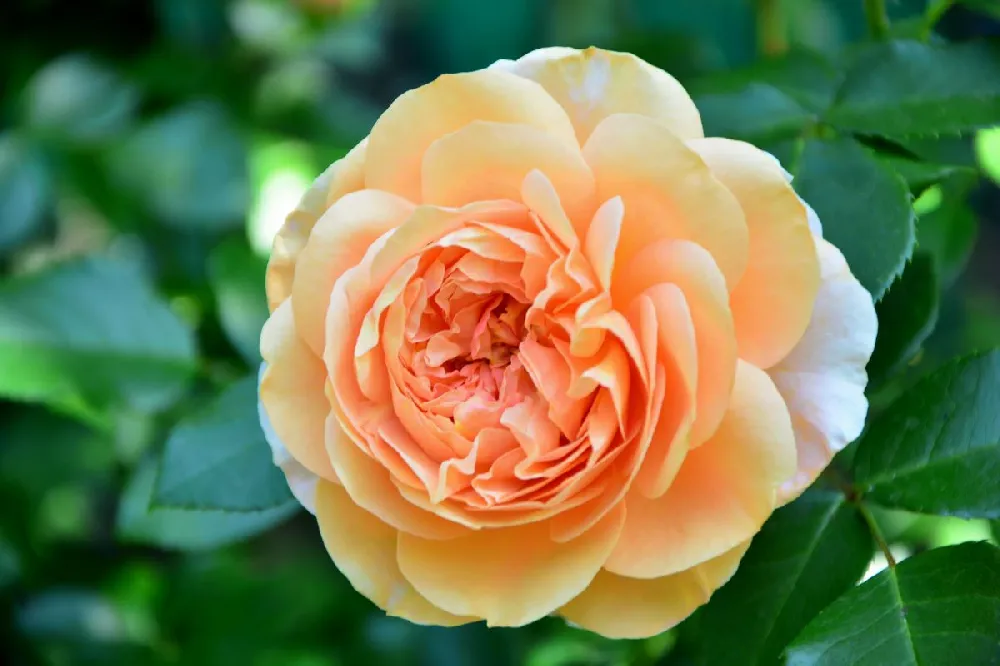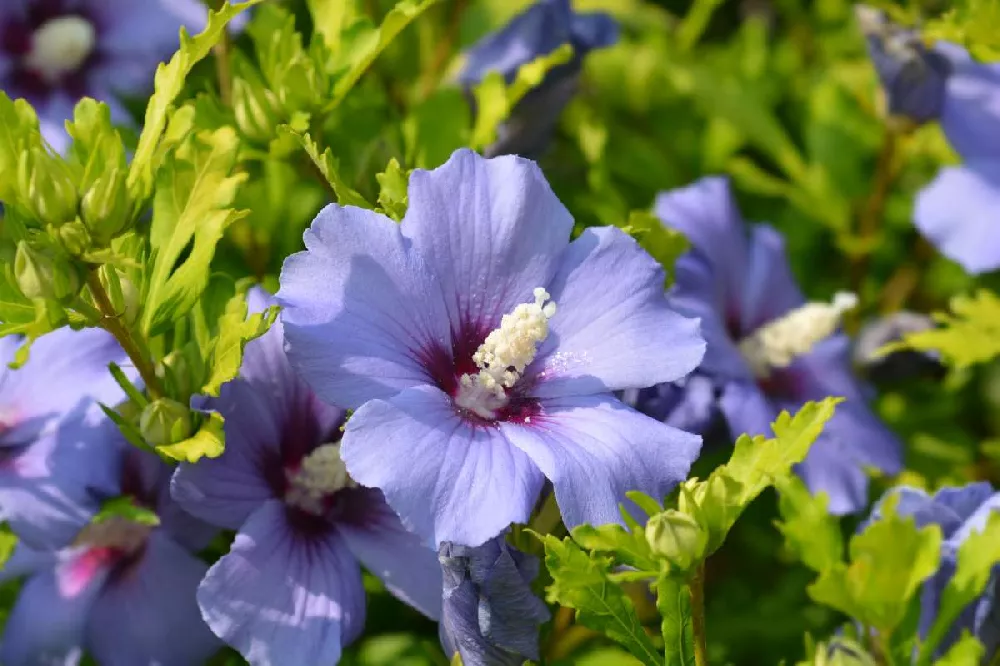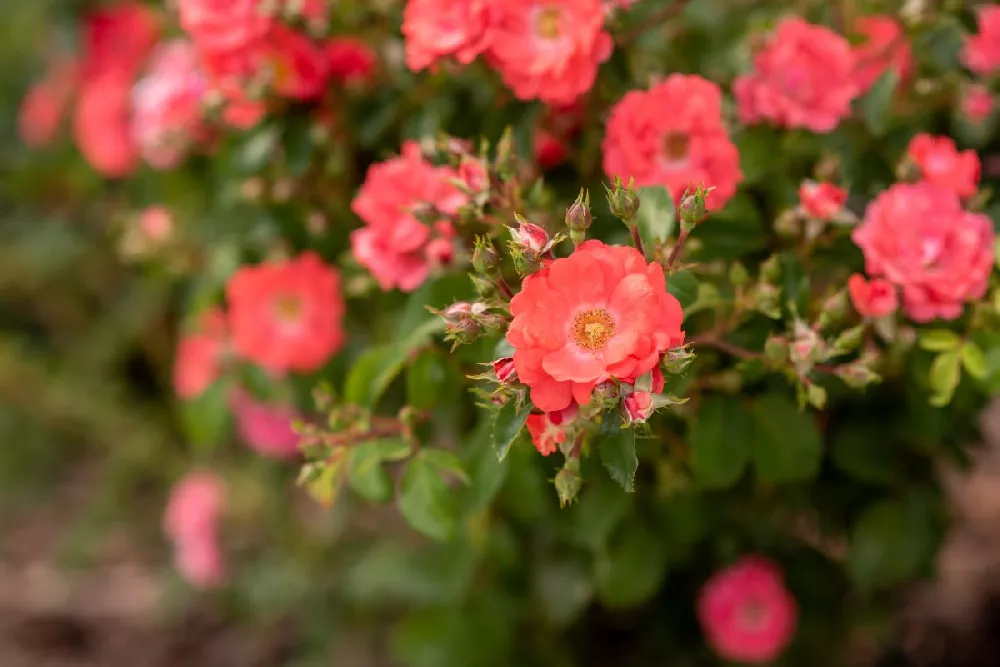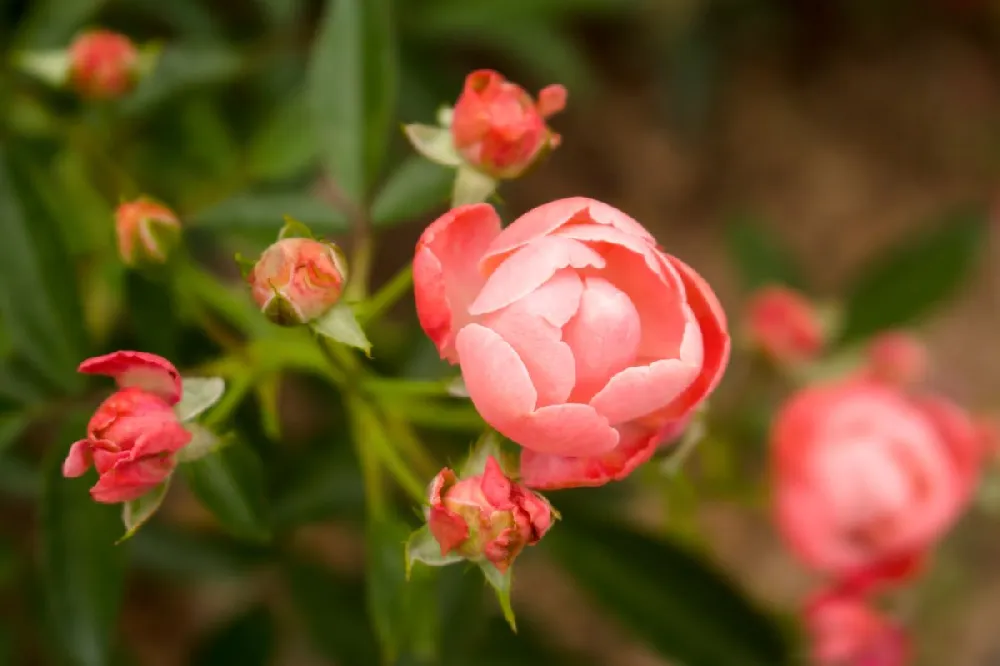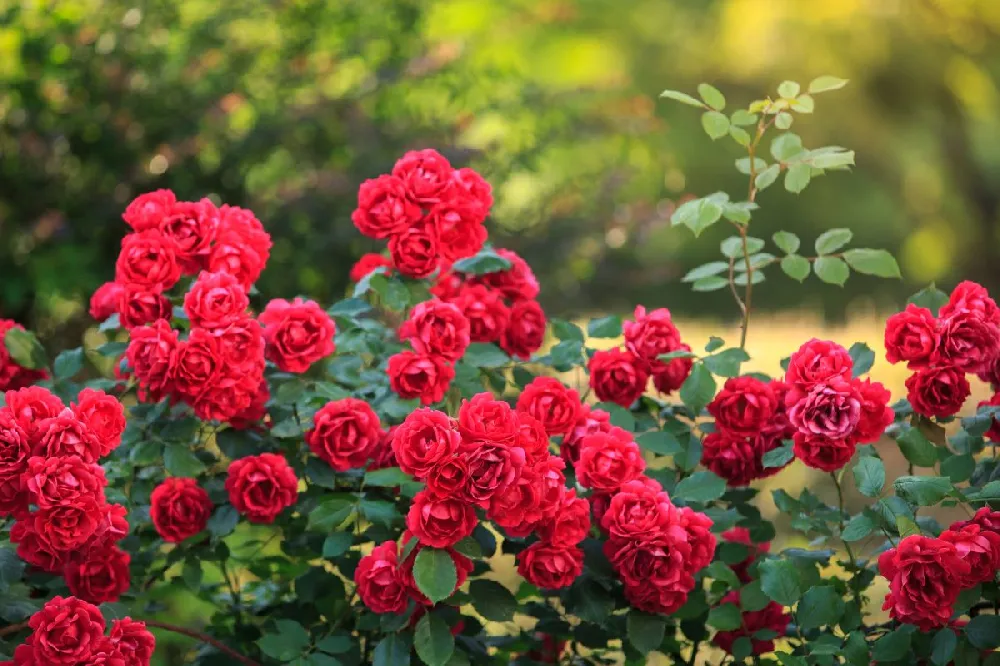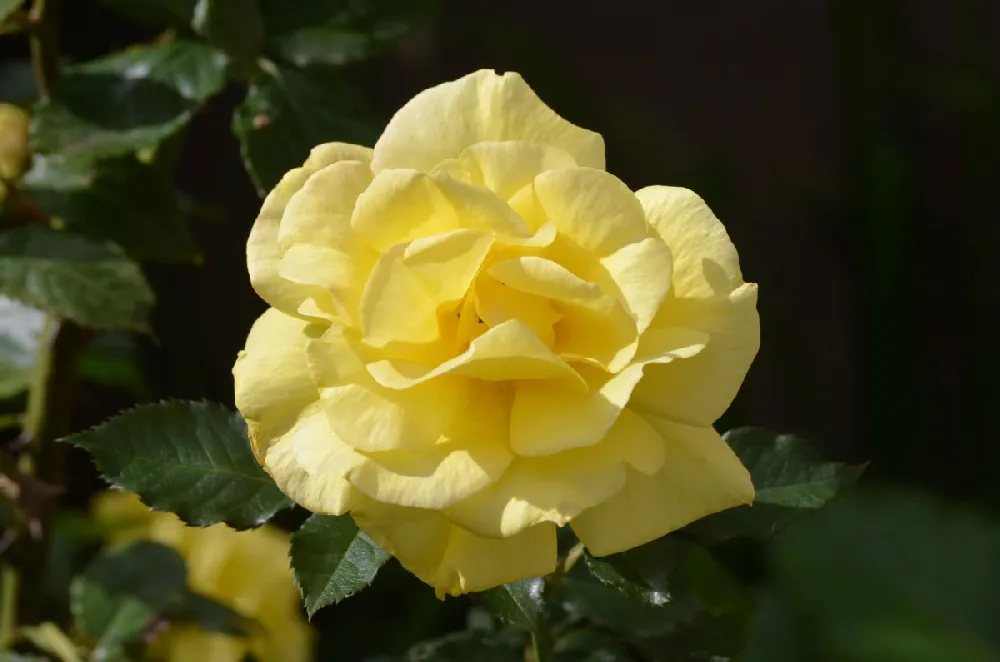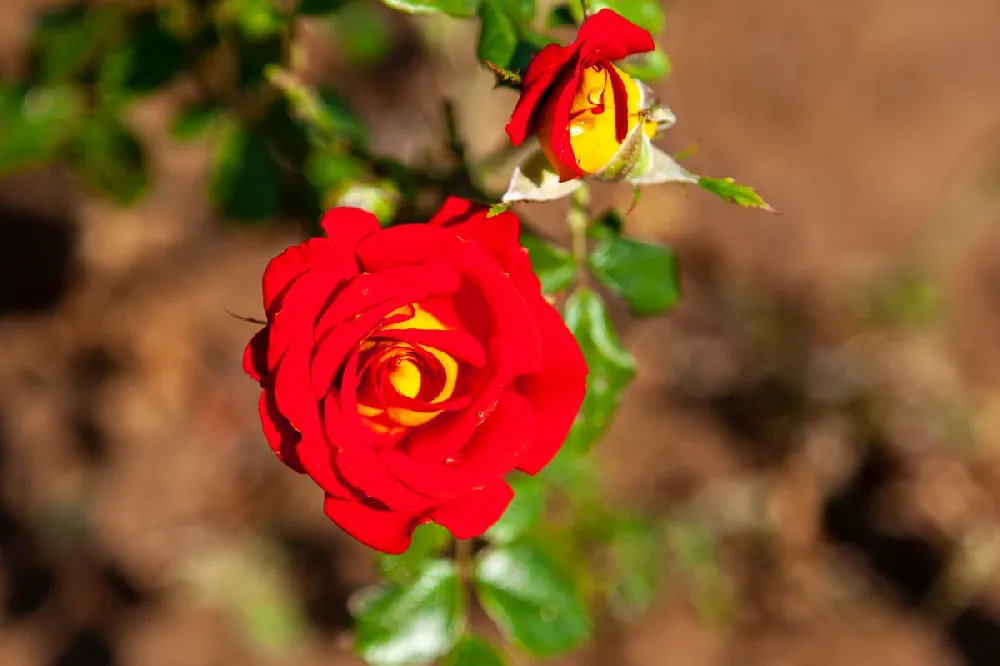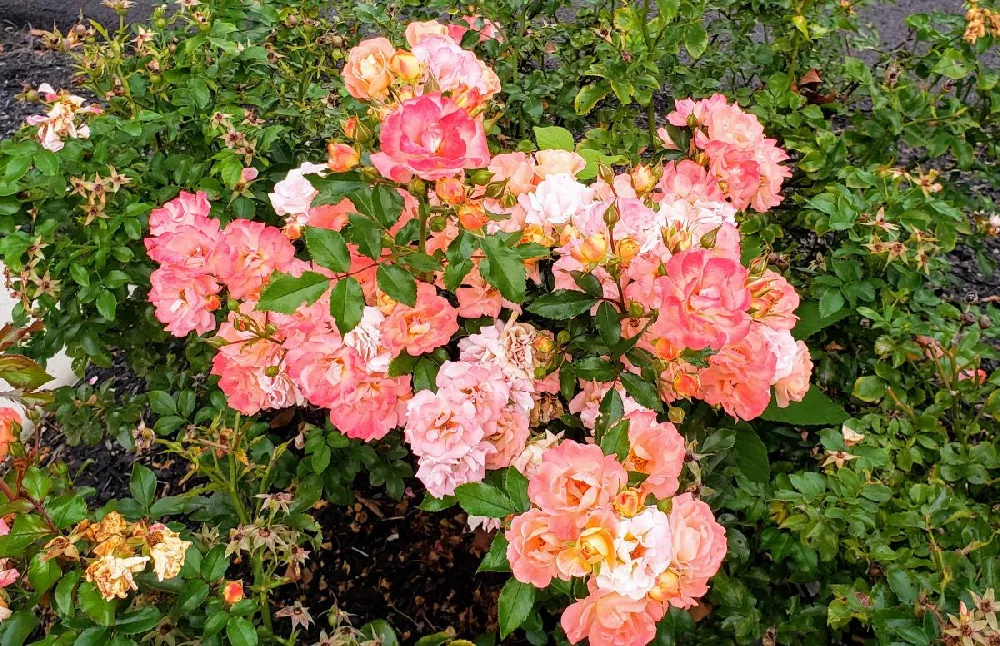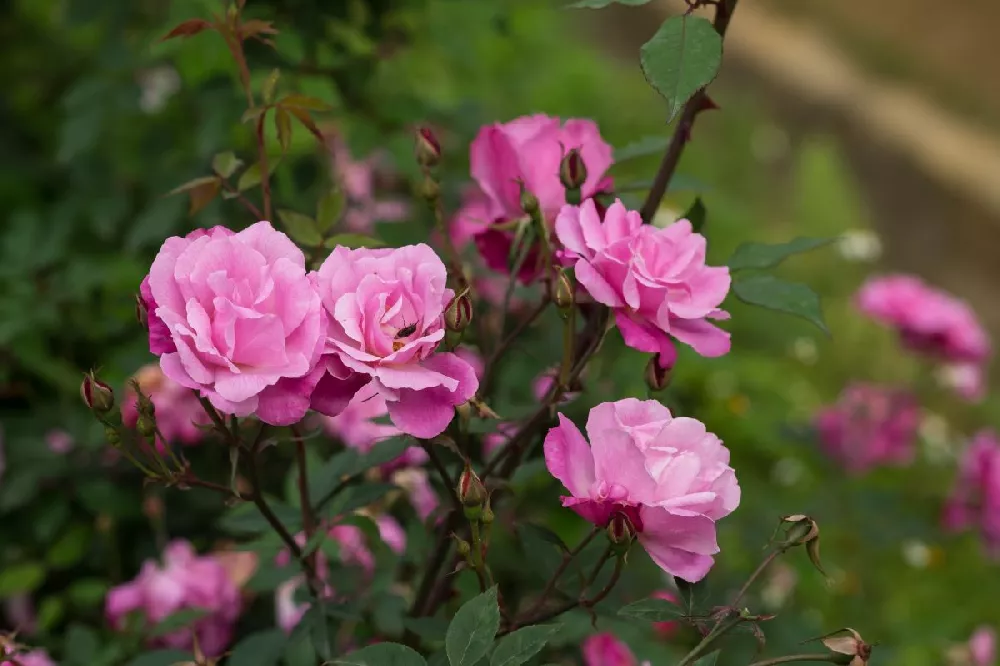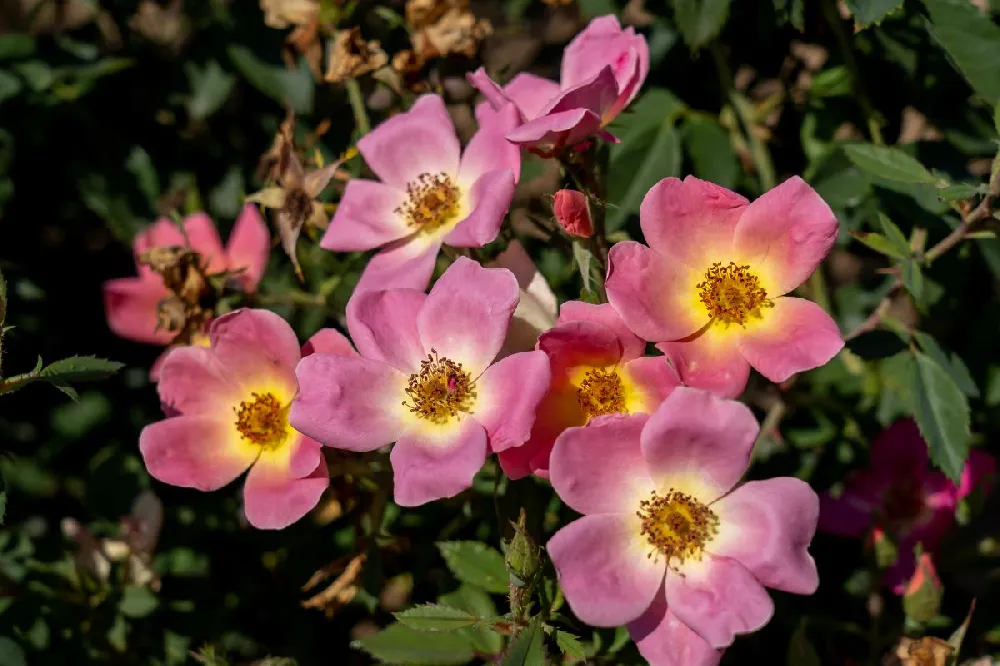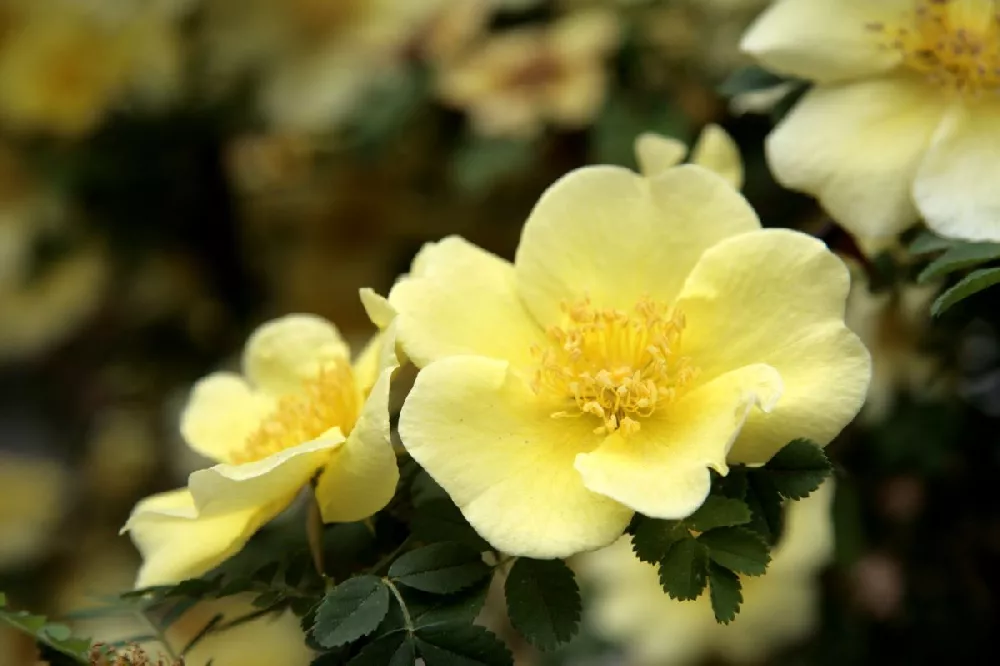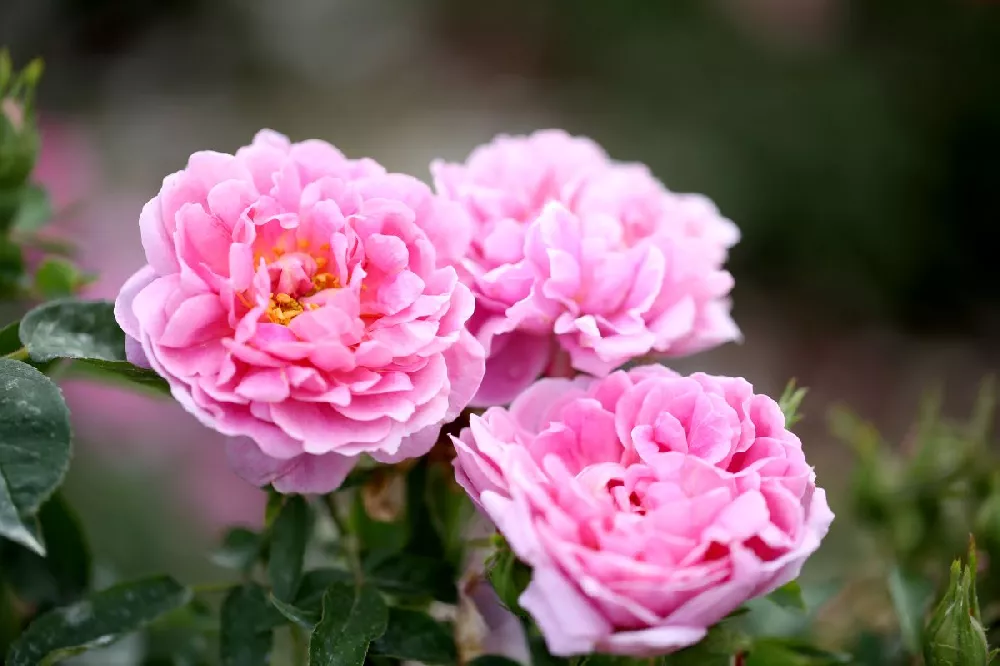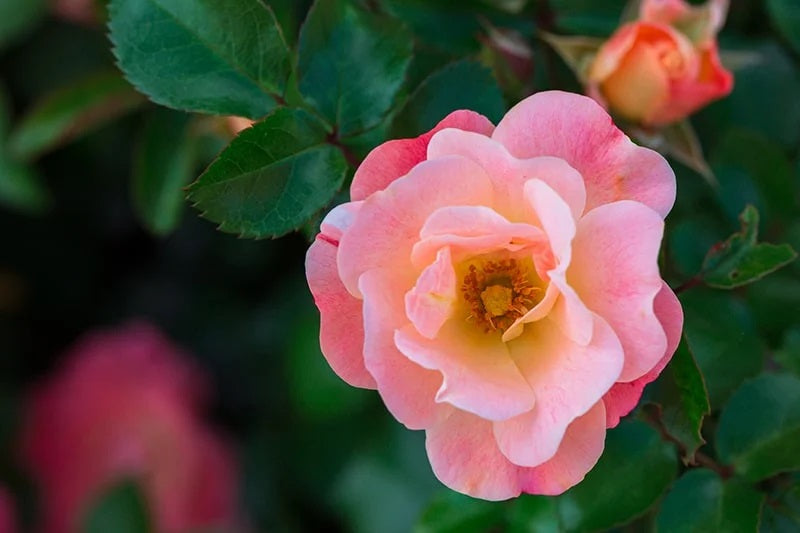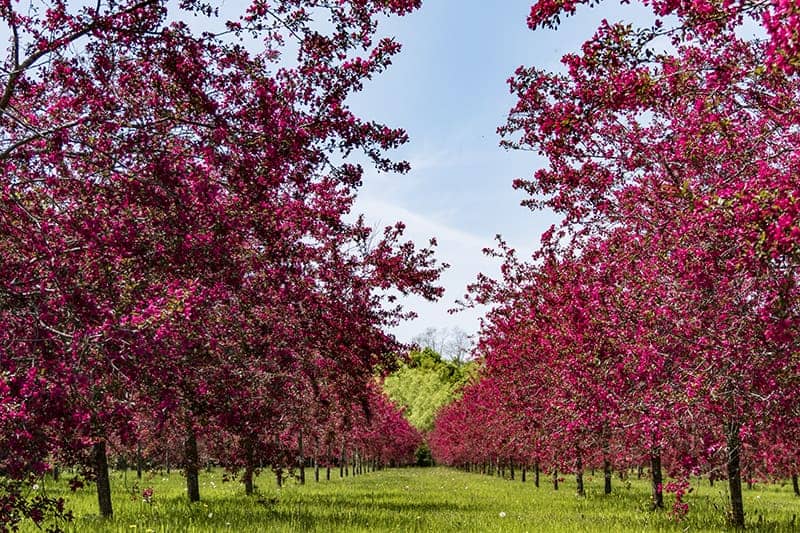- Home >
- Shrubs and Bushes >
- Rose Bushes
Rose Bushes for Sale - Buying & Growing Guide
Filters
Price Range
Growing Zones
Plant Type
Flower Color
Sunlight
Mature Height
Plant Characteristics
43 Results
-
Growing Zone(s): 5-9$33.95
-
Growing Zone(s): 5-9$154.95
$214.95Save up to 27% -
Growing Zone(s): 4-11$52.95
$66.95Save up to 20% -
Growing Zone(s): 5-11$62.95
$76.95Save up to 18% -
Growing Zone(s): 5-10$79.95
$83.95Save up to 4% -
Growing Zone(s): 5-10$67.95
$79.95Save up to 15% -
Growing Zone(s): 5-9$179.95
-
Growing Zone(s): 4-11$74.95
-
Growing Zone(s): 5-10$89.95
$99.95Save up to 10% -
Growing Zone(s): 4-11$114.95
$119.95Save up to 4% -
Growing Zone(s): 4-11$99.95
$199.95Save up to 50% -
Growing Zone(s): 4-11$66.95
$71.95Save up to 6%
Rose Bushes – Buying & Growing Guide
Truly the queens of the landscape plot, roses have a long history of use in both formal gardens and informal cottage beds. Roses benefit from some nurturing by a patient gardener, but they are not nearly as hard to grow as some think; and planting a rose bush or two in your garden elevates it in a way that no other flowering shrub can.
How to Grow Rose Bushes
How to plant rose bushes
If you have purchased a bare-root rose bush, soak it overnight in a pail of water (skip this step if it’s potted). Choose your site carefully. Roses need at least six to eight hours of sunshine a day, in soil that drains easily and has a neutral to slightly acidic pH. If you are planting more than one rose bush, leave at least three feet between them to allow for adequate airflow around the bushes.
Dig a hole somewhat larger around than the root mass, and slightly deeper. Add some well-rotted manure or compost and a handful of bone meal to the hole and dig it in. Loosen up the roots and prune or tease out any that are encircling the root ball. Place it in the hole so that the graft point on the trunk is just underground. Backfill (replace the dirt removed from the hole) with the compost-enriched soil.
Water your new shrub deeply and add several inches of mulch around it to conserve water. While newly-planted, check your rose every few days to see if the ground has dried out—if it has, give it a good drink.
How to achieve maximum results
Rose bushes have a reputation for being finicky and high maintenance, but this is not always the case. Hybrid tea roses, grandiflora, and floribunda roses do, indeed, require consistent care, but shrub roses are happy with occasional watering and feeding, and little else. Choose your variety carefully and you’ll be rewarded with maximum results and abundant flowers.
How to Care for Rose Bushes
Watering and nutrients
Water your rose bush regularly, especially in its first year before it has put down deep roots. Your shrub needs approximately one inch of water per week. A single deep watering is better than shallow waterings every day. Mulch your roses with bark chips or another organic substance to hold water in the soil, and don’t let the plant get waterlogged.
Roses are heavy feeders, and you’ll want to fertilize your rose bush with a balanced, slow-release product, preferably one designed for roses, about every six weeks during the growing season. Stop fertilizing about a month and a half before your first anticipated frost date. If you live in a warm climate with no frost, feed and water your rose bush through the winter.
Pollination
In the wild, roses pollinate via bees and other insects, hummingbirds, and the wind. Most nursery roses are hand-grafted onto a durable rootstock, however, and it’s also possible to create new plants by hand pollinating.
Pruning
Newer rose varieties need little pruning, but older and garden varieties of rose bushes benefit from a spring trim. Begin by removing any dead or diseased canes. If your rose is an older variety, continue with a hard pruning of about one third of the growth from the previous year. Reblooming roses also require deadheading—cut the dying flowers back to the first five-leaflet stem and you should soon see regrowth.
Pests and diseases
The best way to deal with rose diseases is to choose varieties that are resistant to disease. Your county extension agent or a knowledgeable garden center employee can tell you what diseases are prevalent in your area. Roses are susceptible to powdery mildew and black spot, so look for resistance to these diseases when choosing your plants.
Common insects that you’ll find on your roses include aphids, Japanese beetles, sawflies, and spider mites. Insecticidal soap can be useful in treating these pests, or consider biological deterrents such as ladybugs, which feed on aphids.
Modern Garden Rose Categories
Modern garden roses are varieties that have been developed since 1867, which is the year that the first hybrid tea rose was introduced. Modern garden roses tend to bloom continuously and produce larger flowers than those in the old garden rose categories. They also typically last longer once cut, making them the most popular type of roses used for floral bouquets.
However, despite their many attributes, there are some drawbacks. Modern garden roses are more likely to succumb to disease than other types of roses as they are typically less hardy, and they lack the heady fragrance we associate with old garden roses. Modern garden roses can be further broken down into more categories. These include:
Climbing Roses
These roses require more care and attention than most. They do not have a naturally climbing vine habit like you might expect from their name, but they are well adapted to being trained to grow along fences and trellises.
They have stiff canes from which the first flowers of the season will bloom. The subsequent flowers will bloom on the current season’s growth. You can expect roses of this type to bloom at least twice a year, giving the impression of continual blooming. Blooms of climbing roses tend to be large, showy, and are produced in abundance. They need plenty of pruning and training to grow well, but the effort is well rewarded with impressive blooms.
1. Altissimo
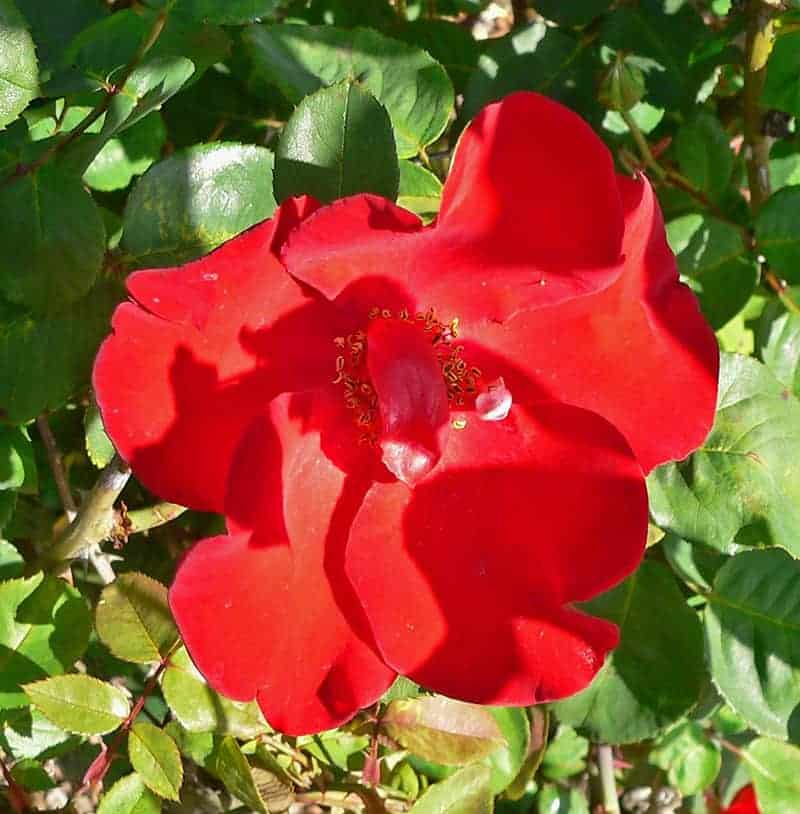
Credit to Stan Shebs
Mature Size: 7 to 9 feet tall
Hardiness Zone: USDA hardiness zones 5 to 10
Light: Full sun
Water: Medium moisture
Soil: Well-draining
Flower color: Red
Special Features: Long-lasting 4-inch-wide blooms
2. Blaze
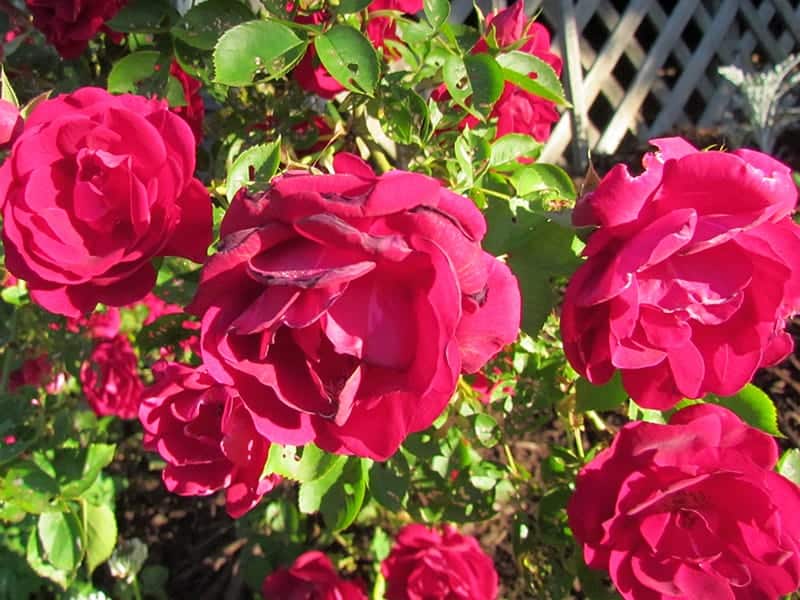
Mature Size: 15 feet tall
Hardiness Zone: USDA hardiness zones 6 to 10
Light: Full sun to partial shade
Water: Medium moisture
Soil: Well-draining
Flower Color: Red
Special Features: Mildly scented luscious red blooms
3. Dortmund
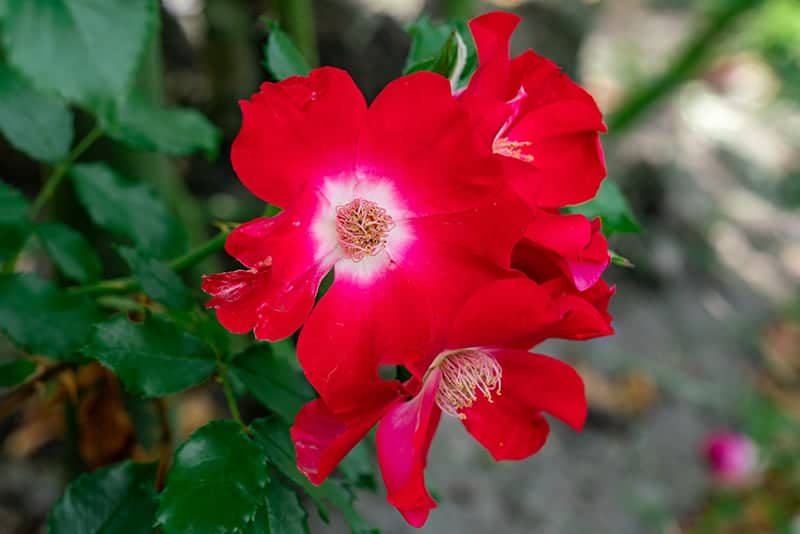
Mature Size: 6 to 10 feet tall
Hardiness Zone: USDA hardiness zones 5 to 19
Light: Full sun
Water: Medium moisture
Soil: Well-draining
Flower Color: Red and white
Special Features: Open-faced red blooms with white centers (Missouri Botanical Garden)
Floribunda Roses
Floribunda roses are shrubs that have upright or bushy branching habits. Their blooms tend to be smaller than many other types of roses, but they flower in such abundance that they make quite a striking effect. These roses tend to be quite easy to care for, making them popular in common spaces. They are fairly disease resistant and hardy against adverse weather. They have a long blooming period, blooming continuously from spring through fall.
4. Iceberg
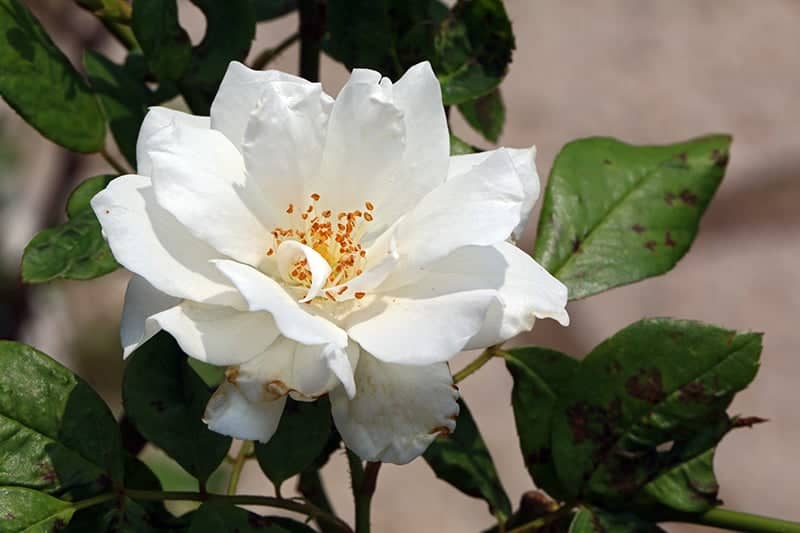
Mature Size: 3 to 12 feet tall
Hardiness Zone: USDA hardiness zones 5 to 19
Light: Full sun
Water: Medium moisture
Soil: Well-draining
Flower Color: White
Special Features: Winner of the prestigious Award of Garden Merit from the Royal Horticultural Society
5. Julia Child
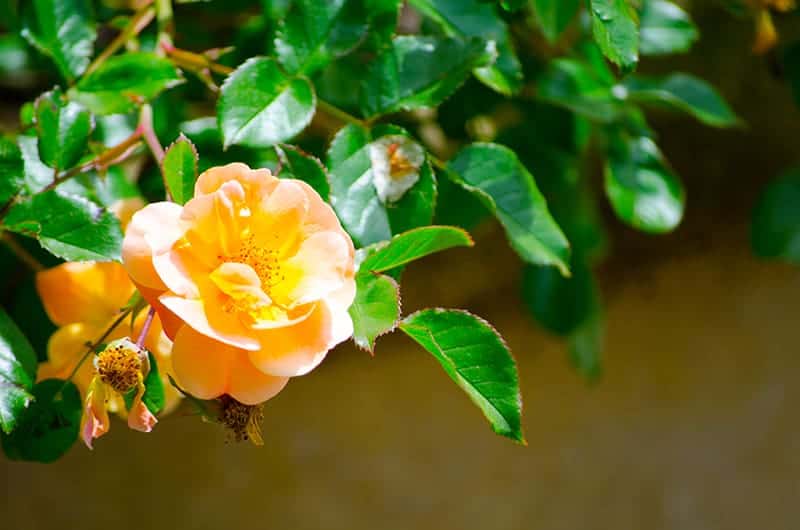
Mature Size: 2 to 3 feet tall
Hardiness Zone: USDA hardiness zones 5 to 10
Light: Full sun
Water: Medium moisture
Soil: Well-draining
Flower Color: Butter yellow
Special Features: Licorice-scented blooms
6. Tickled Pink
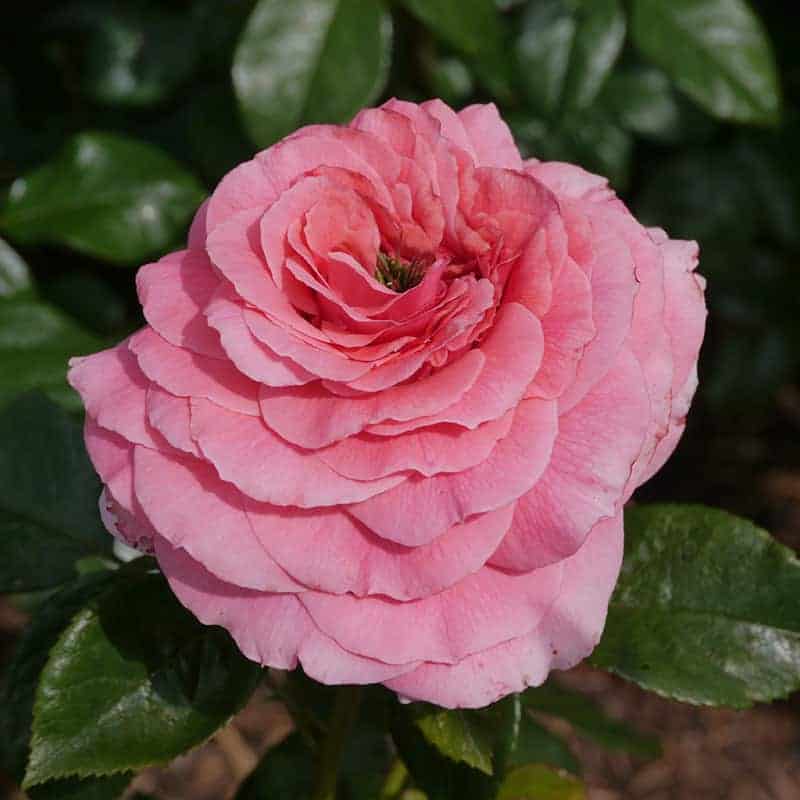
Mature Size: 2 to 3 feet tall
Hardiness Zone: USDA hardiness zones 6 to 19
Light: Full sun
Water: Medium moisture
Soil: Well-draining
Flower Color: Pink
Special Features: Ruffled blooms produced in high quantities
David Austin Roses
David Austin roses, also known as English roses, have been around since 1961 when the rose breeder decided he wanted to create a new class of roses which benefited from the classical look of old garden roses, but also the hardiness of new garden roses. He also wanted to develop roses that were both aesthetically romantic but also had a long blooming period.
The David Austin roses are now some of the most popular roses, with over 200 types to choose from—many having received coveted awards.
7. Princess Alexandra of Kent
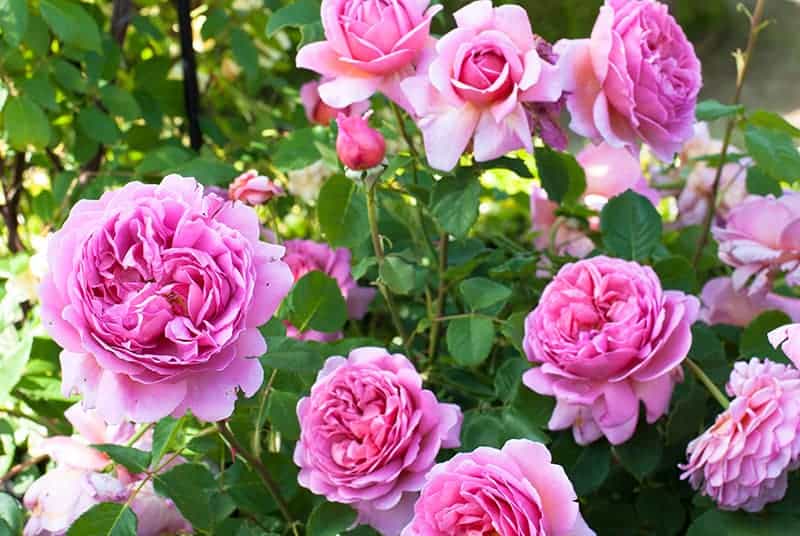
Mature Size: 3 to 4 feet tall
Hardiness Zone: USDA hardiness zones 5 to 9
Light: Full sun
Water: Medium moisture
Soil: Well-draining
Flower Color: Pink
Special Features: Unusually large, cupped blooms
8. Lady Emma Hamilton
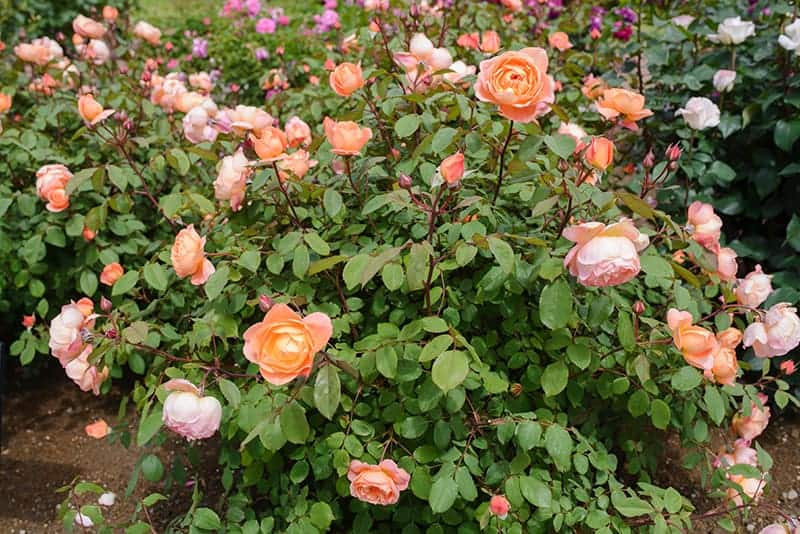
Mature Size: 3 to 4 feet tall
Hardiness Zone: USDA hardiness zones 5 to 9
Light: Full sun
Water: Medium moisture
Soil: Well-draining
Flower Color: Coral
Special Features: Strong citrus scent
9. Graham Thomas
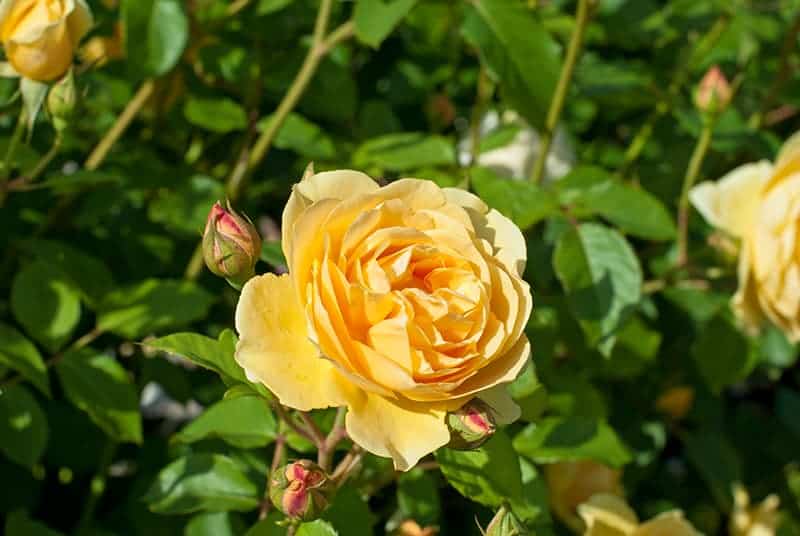
Mature Size: 5 to 10 feet tall
Hardiness Zone: USDA hardiness zones 5 to 10
Light: Full sun to partial shade
Water: Medium moisture
Soil: Well-draining
Flower Color: Yellow
Special Features: Voted ‘World’s favorite rose 2009’
Grandiflora Roses
These roses categorize those which are crossed between hybrid tea roses and floribunda roses, offering the dainty flowers of hybrid tea blooms and the long blooming period of floribundas. Grandiflora roses typically have large, showy flowers that grow on tall stems. The shrub of the Grandiflora rose is usually larger and more erect than hybrid tea shrubs. They make long-lasting cut flower bouquets.
10. Cherry Parfait
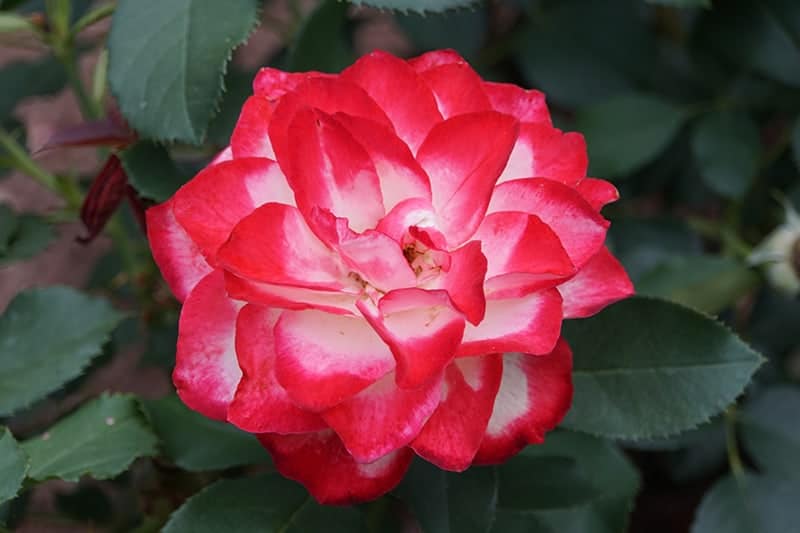
Mature Size: 4 to 5 feet tall
Hardiness Zone: USDA hardiness zones 4 to 9
Light: Full sun
Water: Medium moisture
Soil: Well-draining
Flower Color: White and pink
Special Features: Two-tone blooms, with white centers and frilled pink edges
11. Mother of Pearl
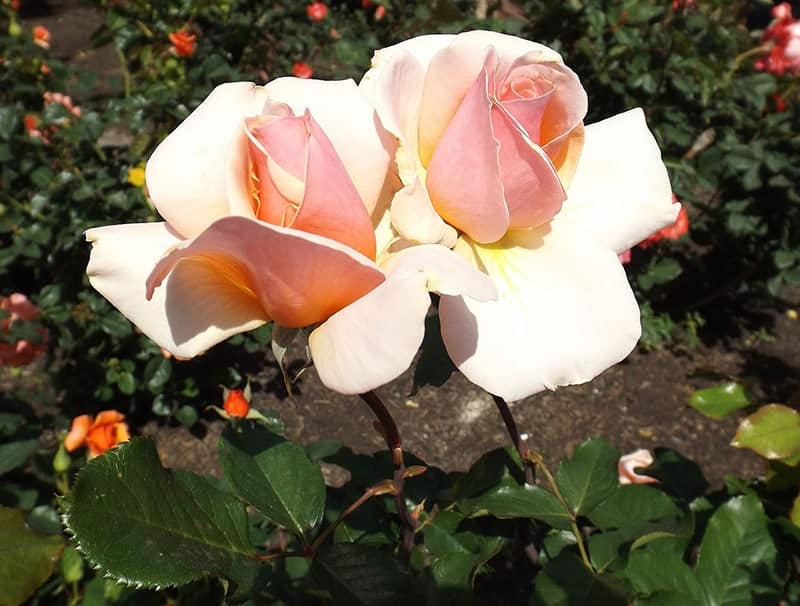
Credit to Ruff tuff cream puff
Mature Size: 3 to 4 feet tall
Hardiness Zone: USDA hardiness zones 5 to 9
Light: Full sun
Water: Medium moisture
Soil: Well-draining
Flower Color: Pale pink
Special Features: Large 3.5-inch blooms
12. Queen Elizabeth
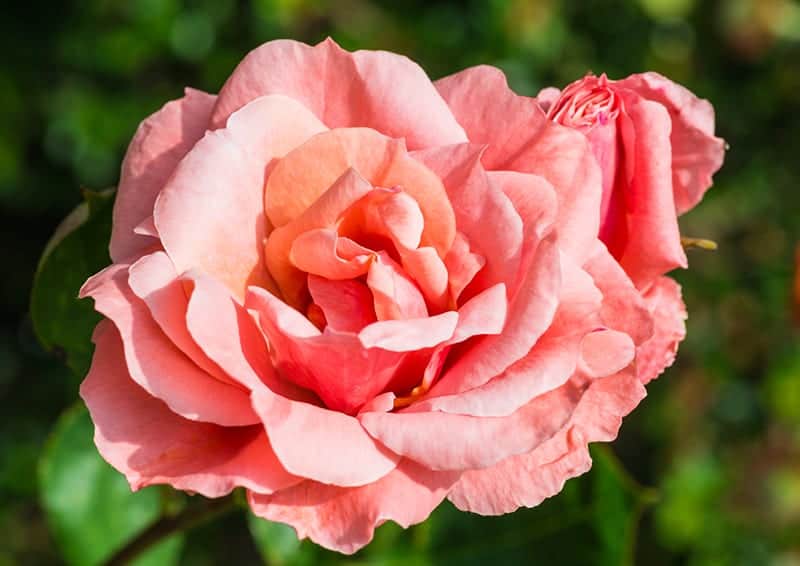
Mature Size: 4 to 6 feet tall
Hardiness Zone: USDA hardiness zones 5 to 9
Light: Full sun
Water: Medium moisture
Soil: Well-draining
Flower Color: Pink
Special Features: Disease resistant and almost thornless
Hybrid Tea Roses
These high-maintenance roses are probably the most beautiful of all the modern garden roses, but they also have a reputation as being the most troublesome to care for. They are not very hardy, but this is balanced by the fact that they produce incredibly striking blooms in an array of colors, as large as 5 inches across. Many of these roses have pleasant scents and make excellent cut flowers.
13. Dark Night
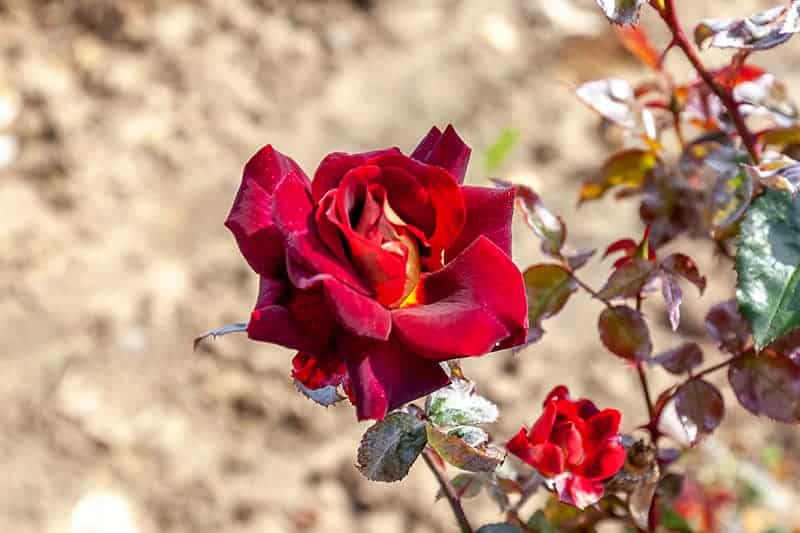
Mature Size: 6 to 6 feet tall
Hardiness Zone: USDA hardiness zones 5 to 9
Light: Full sun
Water: Medium moisture
Soil: Well-draining
Flower Color: Dark burgundy
Special Features: Dramatic colored blooms
14. Eternal Flame
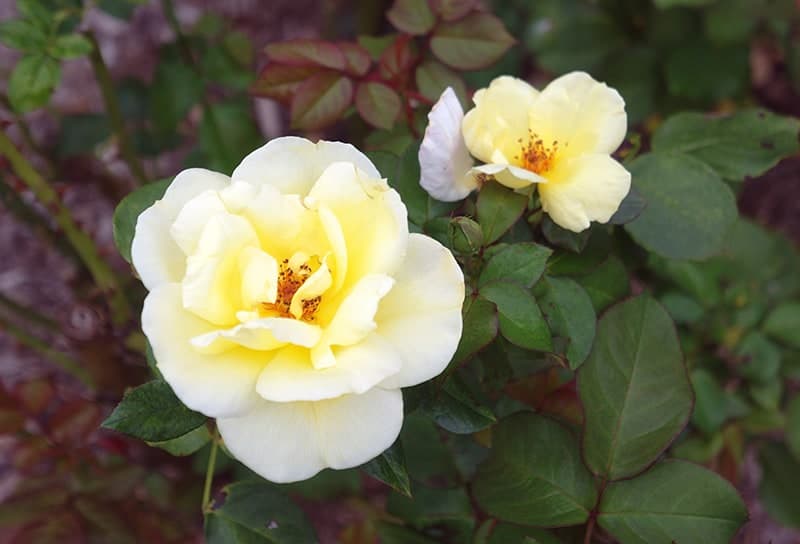
Credit to Kelvinsong
Mature Size: 4 to 5 feet tall
Hardiness Zone: USDA hardiness zones 6 to 9
Light: Full sun
Water: Medium moisture
Soil: Well-draining
Flower Color: Butter yellow
Special Features: Intensely citrus-scented blooms
15. Double Delight
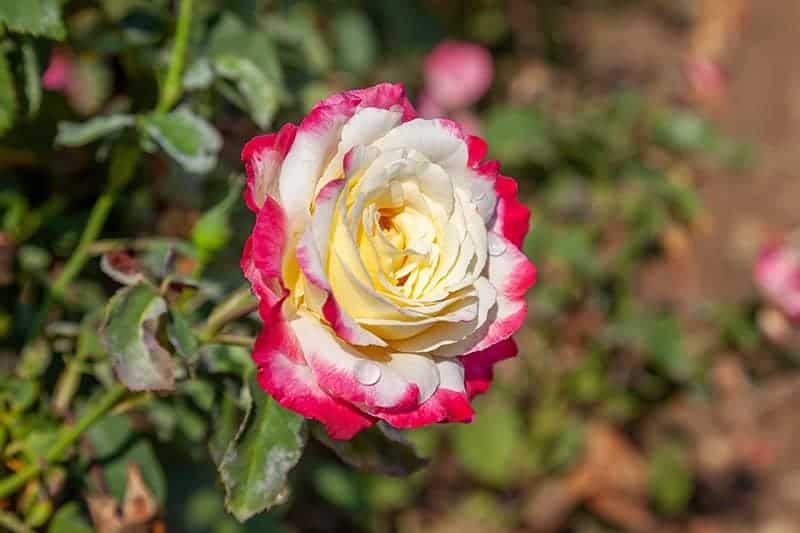
Mature Size: 3 to 5 feet tall
Hardiness Zone: USDA hardiness zones 5 to 9
Light: Full sun
Water: Medium moisture
Soil: Well-draining
Flower Color: Cream and red
Special Features: Large two-tone blooms with a spicy aroma
Groundcover Roses
These roses have spreading or trailing habits, typically being wider than they are tall. While some can reach up to 3 feet in height, many will top out at 1 foot. These roses are easy to care for and are typically hardy and disease resistant, blooming nonstop. These work well on sloping banks, providing a colorful carpet of beauty.
16. Flower Carpet Coral
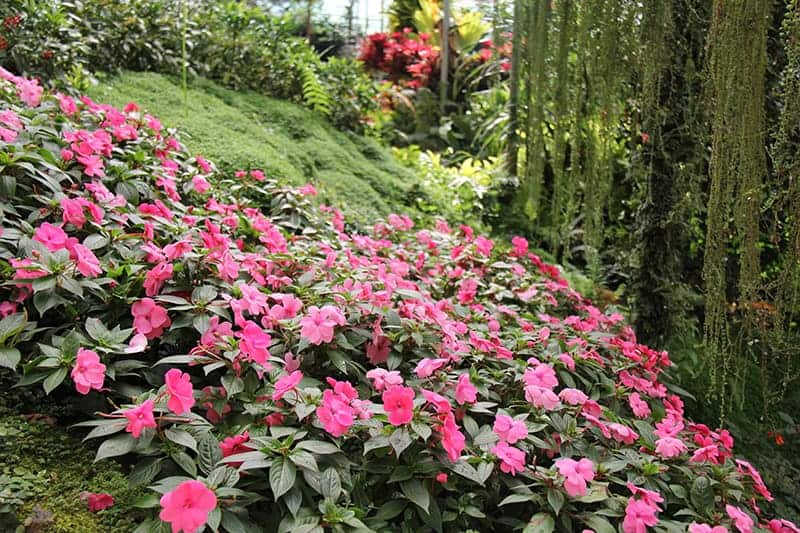
Mature Size: 2 to 3 feet tall
Hardiness Zone: USDA hardiness zones 5 to 11
Light: Full sun to partial shade
Water: Medium moisture
Soil: Well-draining
Flower Color: Coral pink
Special Features: Blooms in abundance, with up to 2,000 flowers each season
17. Flower Carpet Scarlet
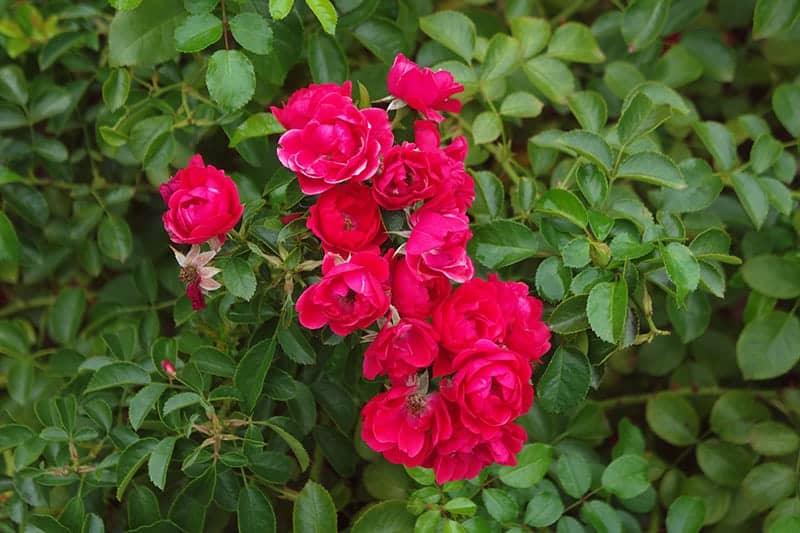
Credit to Kelvinsong
Mature Size: 2 to 3 feet tall
Hardiness Zone: USDA hardiness zones 5 to 11
Light: Full sun to partial shade
Water: Medium moisture
Soil: Well-draining
Flower Color: Red
Special Features: Vivid blooms against glossy foliage
18. Flower Carpet Amber
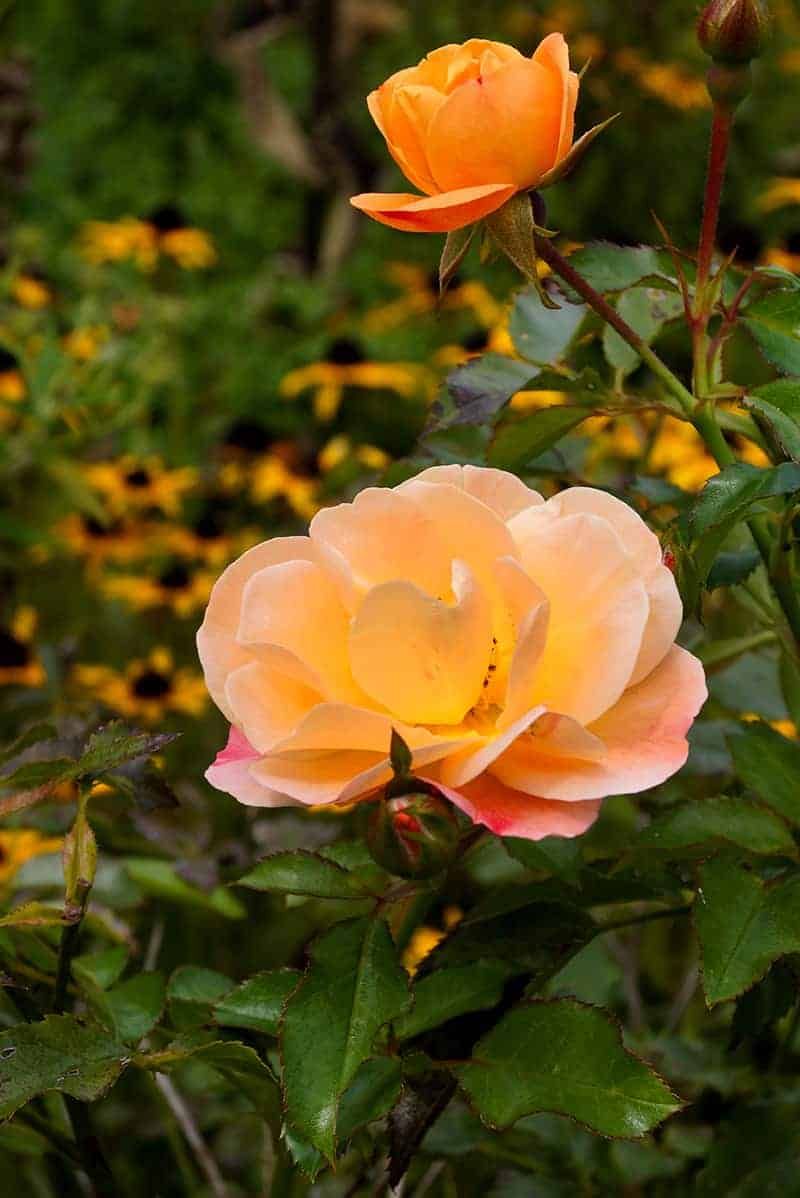
Mature Size: 2 to 3 feet tall
Hardiness Zone: USDA hardiness zones 4 to 11
Light: Full sun to partial shade
Water: Medium moisture
Soil: Well-draining
Flower Color: Pale orange-yellow
Special Features: Long blooming season
Polyantha Roses
These roses are popular because they are easy to care for and have a long blooming period. Their blooms tend to be quite small, but a healthy plant will bloom profusely from mid-spring right through to fall, therefore putting on quite a show. The flowers grow in clusters and are usually pink, white, or red. They work well in pots or as bedding plants.
19. The Fairy
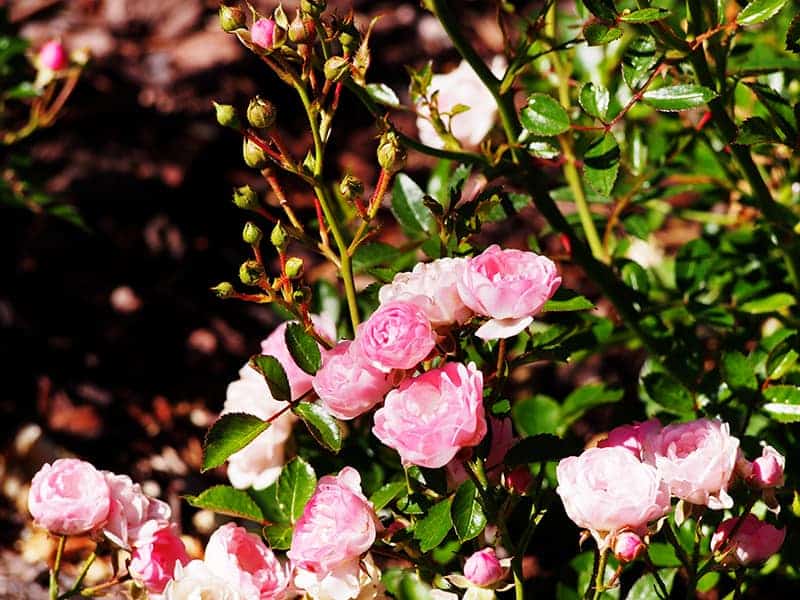
Mature Size: 2 to 4 feet tall
Hardiness Zone: USDA hardiness zones 4 to 9
Light: Full sun to partial shade
Water: Medium moisture
Soil: Well-draining
Flower Color: Pink
Special Features: Tolerant of shade
20. Gruss an Aachen
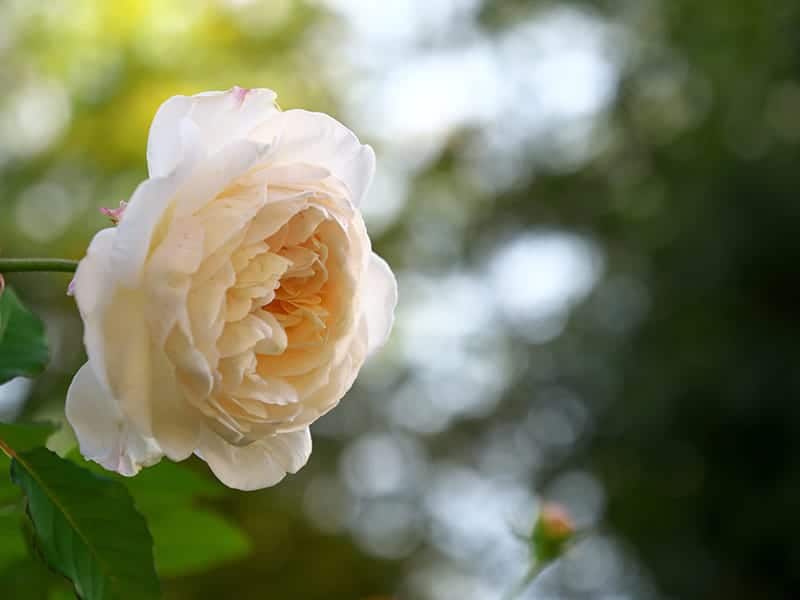
Mature Size: 1 to 2 feet tall
Hardiness Zone: USDA hardiness zones 4 to 11
Light: Full sun
Water: Medium moisture
Soil: Well-draining
Flower Color: Cream
Special Features: Fully double rosette blooms
Rambler Roses
These roses have a similar climbing habit to climbing roses, being suitable for training up fences or along pergolas. They work well for covering unsightly areas or buildings, as the stems tend to be heavily covered in flowers. Unlike climbing roses, rambler roses are easier to care for and require much less maintenance. However, they tend to only bloom once each year for several weeks. These roses are quite hardy, being tolerant of partial shade, disease, and poor soil conditions.
21. American Pillar
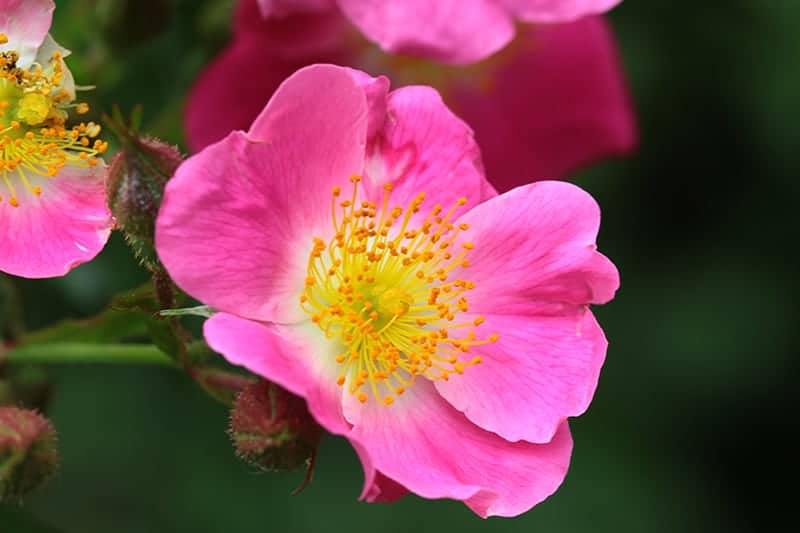
Mature Size: 10 to 20 feet tall
Hardiness Zone: USDA hardiness zones 4 to 9
Light: Full sun to partial shade
Water: Medium moisture
Soil: Well-draining
Flower Color: Hot pink
Special Features: Vibrant yellow stamens contrast against pink blooms
22. Dorothy Perkins
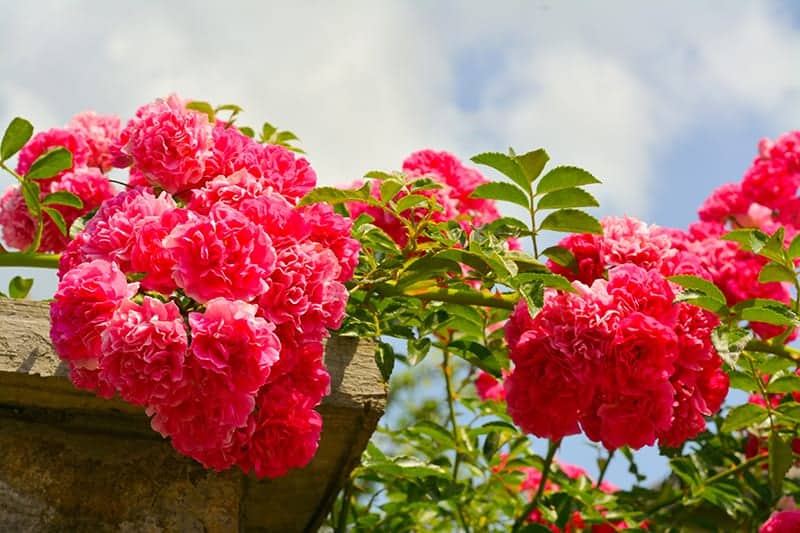
Mature Size: 10 to 20 feet tall
Hardiness Zone: USDA hardiness zones 4 to 9
Light: Full sun
Water: Medium moisture
Soil: Well-draining
Flower Color: Salmon pink
Special Features: Cascading flowers
Shrub Roses
Shrub roses are typically hardy and easy-care plants. They flower continuously with small flowers that bloom profusely. The dense mass of flowers make shrub roses ideally suited to creating screens or pretty hedges. These roses were bred from crossing old and modern garden roses.
23. Peachy Knock Out
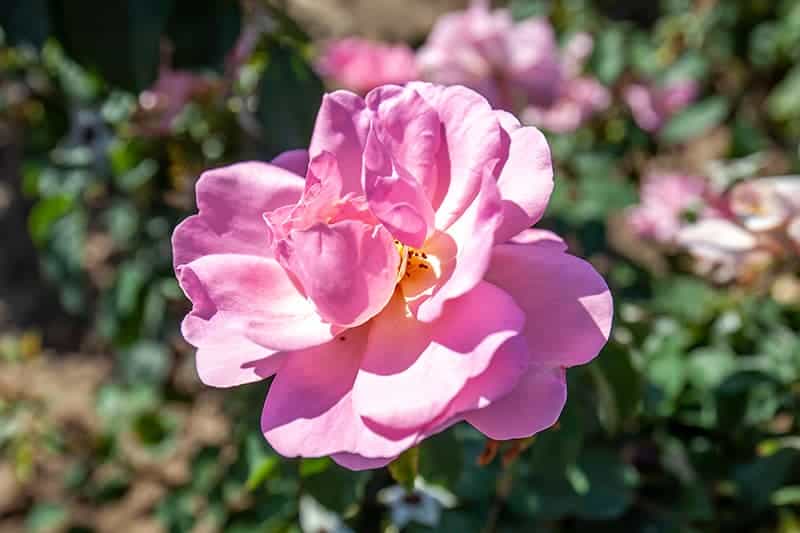
Mature Size: 3 to 4 feet tall
Hardiness Zone: USDA hardiness zones 4 to 11
Light: Full sun to partial shade
Water: Medium moisture
Soil: Well-draining
Flower Color: Pink
Special Features: Blooms have contrasting yellow centers
24. Double Knock Out
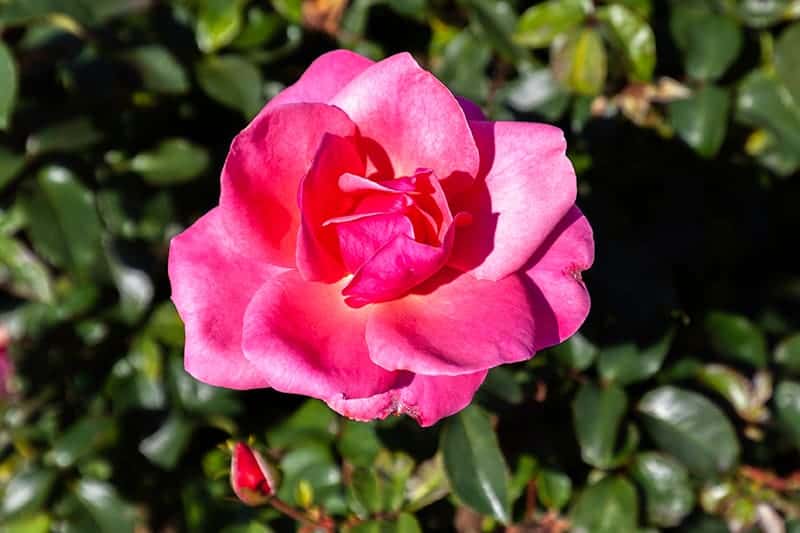
Mature Size: 3 to 4 feet tall
Hardiness Zone: USDA hardiness zones 5 to 11
Light: Full sun to partial shade
Water: Medium moisture
Soil: Well-draining
Flower Color: Red
Special Features: Produces abundant clusters of double blooms
Miniature Roses
These are miniature versions of hybrid tea roses. They bloom for several weeks at a time, with dainty stems, foliage, and flowers. They make versatile plants, working well as container plants, bedding plants, and also as houseplants.
25. Lemon Delight
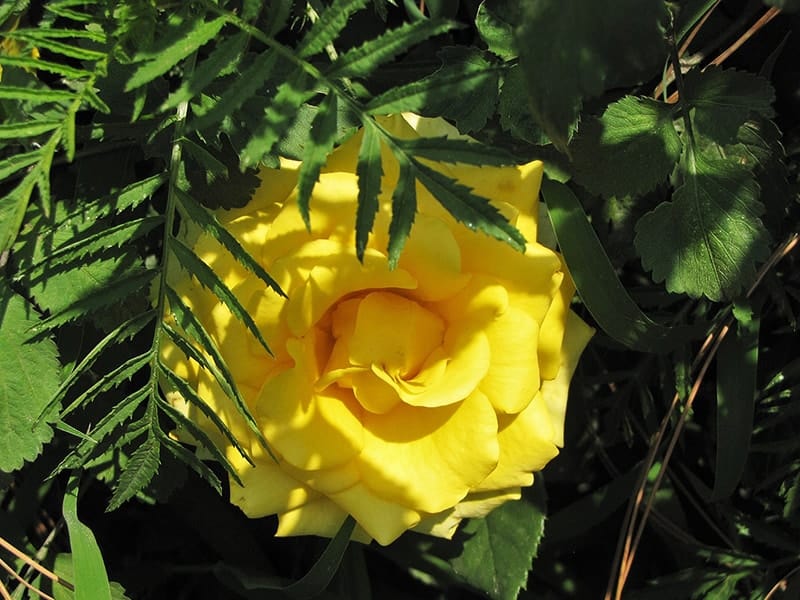
Credit to Sujayadhar
Mature Size: 2 to 3 feet tall
Hardiness Zone: USDA hardiness zones 6 to 10
Light: Full sun
Water: Medium moisture
Soil: Well-draining
Flower Color: Yellow
Special Features: Fragrant blooms
Old Garden Roses
Old garden roses are also known as heritage roses. They are those which were in existence before 1867 when the hybrid tea rose was introduced. They are renowned for their romantic blooms and strong heady fragrance. They are also typically quite hardy and disease resistant. However, their drawback is that they only bloom once a year in the summer. Categories of old garden roses include the following.
Alba Roses
Alba roses are some of the oldest roses in existence and also present some of the hardiest roses available. They are tolerant of cold temperatures, shade, and are resistant to disease and pests. They are typically low-maintenance and bloom once each year in summer.
26. Pompon Blanc Parfait
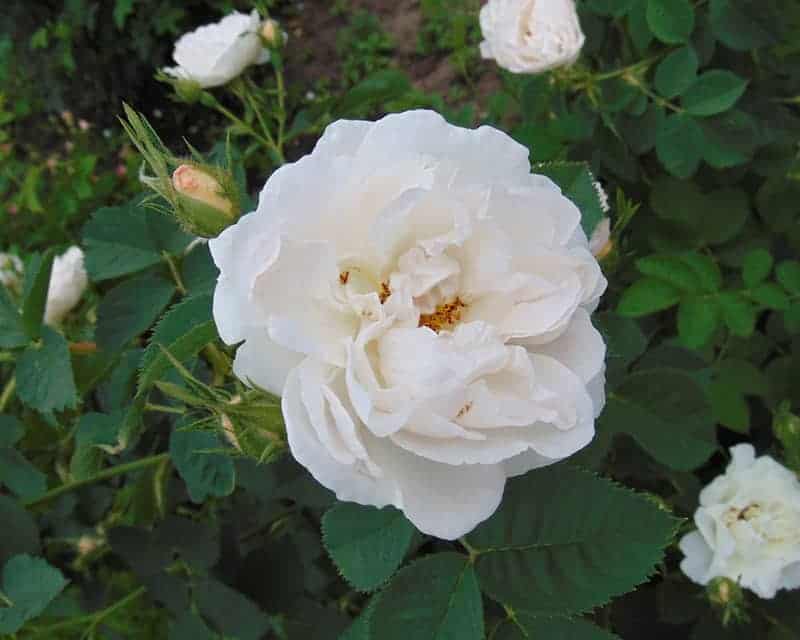
Credit to Nadiatalent
Mature Size: 3 to 4 feet tall
Hardiness Zone: USDA hardiness zones 4 to 10
Light: Full sun
Water: Medium moisture
Soil: Well-draining
Flower Color: Lilac pink
Special Features: Slight fragrance
Bourbon Roses
These roses were first introduced in France in 1817, and they are suspected to be crossed between China roses and damask roses. They are typically found in shades of pink or red and have strong fragrances. Often, bourbon roses will be thornless or have very few thorns on their stems. They can be trained to climb up or along structures and can bloom more than once each season.
27. Madame Isaac Pereire
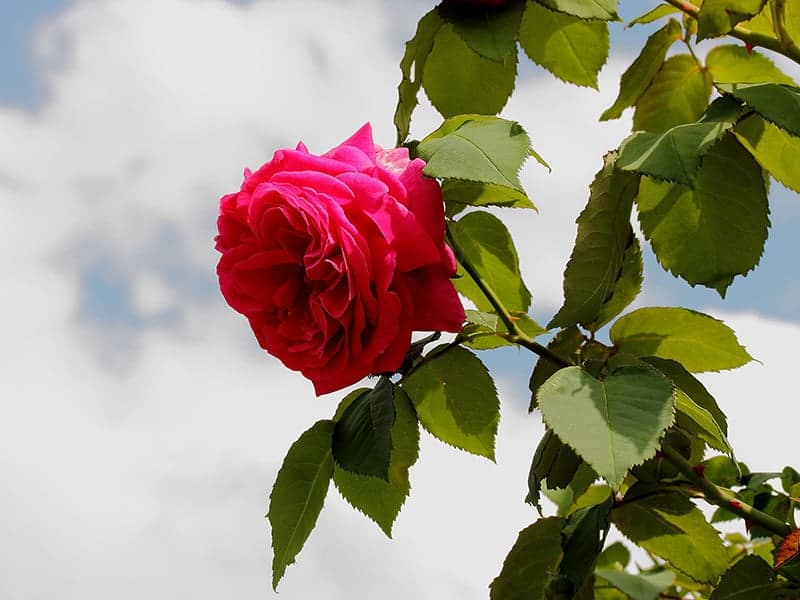
Credit to Dominicus Johannes Bergsma
Mature Size: 5 to 8 feet tall
Hardiness Zone: USDA hardiness zones 6 to 9
Light: Full sun to partial shade
Water: Medium moisture
Soil: Well-draining
Flower Color: Pink
Special Features: Large 6-inch blooms
28. Zepherine Drouhin
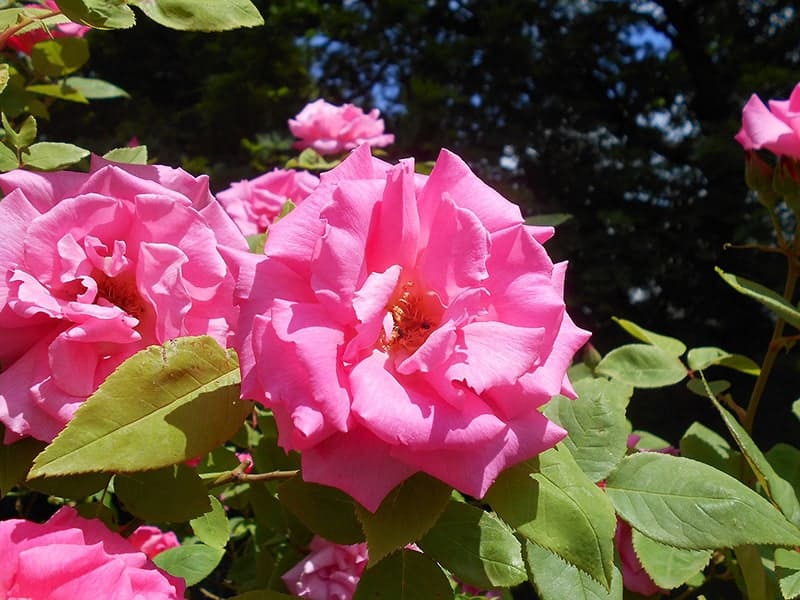
Credit to Salicyna
Mature Size: 4 to 12 feet tall
Hardiness Zone: USDA hardiness zones 5 to 9
Light: Full sun to partial shade
Water: Medium moisture
Soil: Well-draining
Flower Color: Pink
Special Features: Continuous blooming from early spring to fall
China Roses
These roses tend to be resistant to disease, but they are tender and will succumb to cold weather conditions. They bloom repeatedly throughout the summer, with small flowers that have a strong fragrance.
29. Louis Phillipe
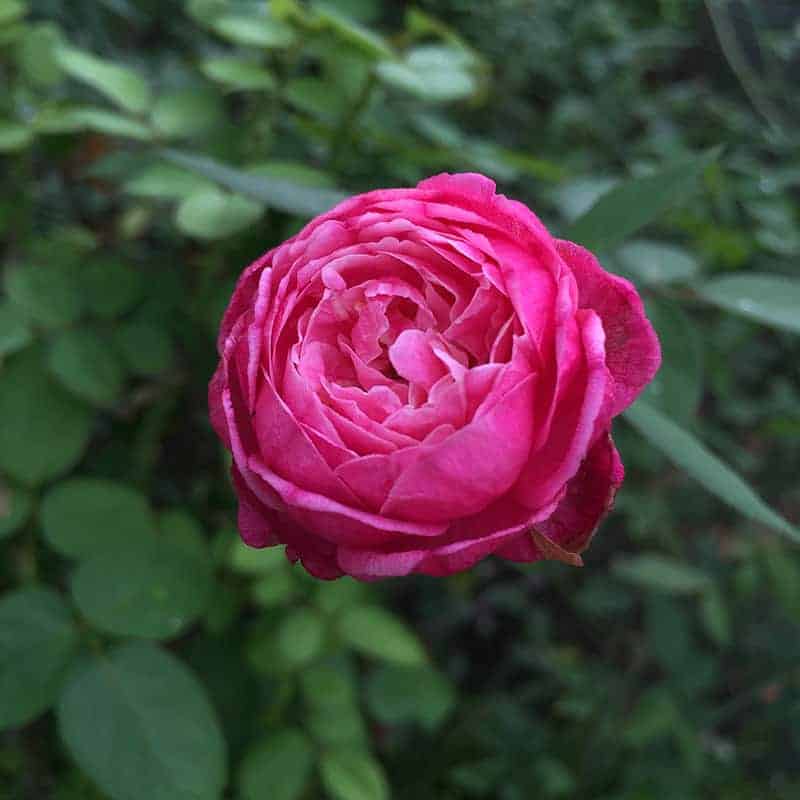
Mature Size: 3 to 4 feet tall
Hardiness Zone: USDA hardiness zones 7 to 10
Light: Full sun
Water: Medium moisture
Soil: Well-draining
Flower Color: Pink
Special Features: Attractive to butterflies
Centifolia Roses
These are also known as cabbage roses because the petals are packed together so tightly, resembling the head of a cabbage. The blooms are so large and heavy that they tend to have a drooping appearance because the stems cannot keep them upright under the pressure of the weight. These roses are stunningly beautiful and heavily fragrant, but they only bloom once each year. They are more likely to succumb to disease than most other types of roses.
30. Petite de Hollande
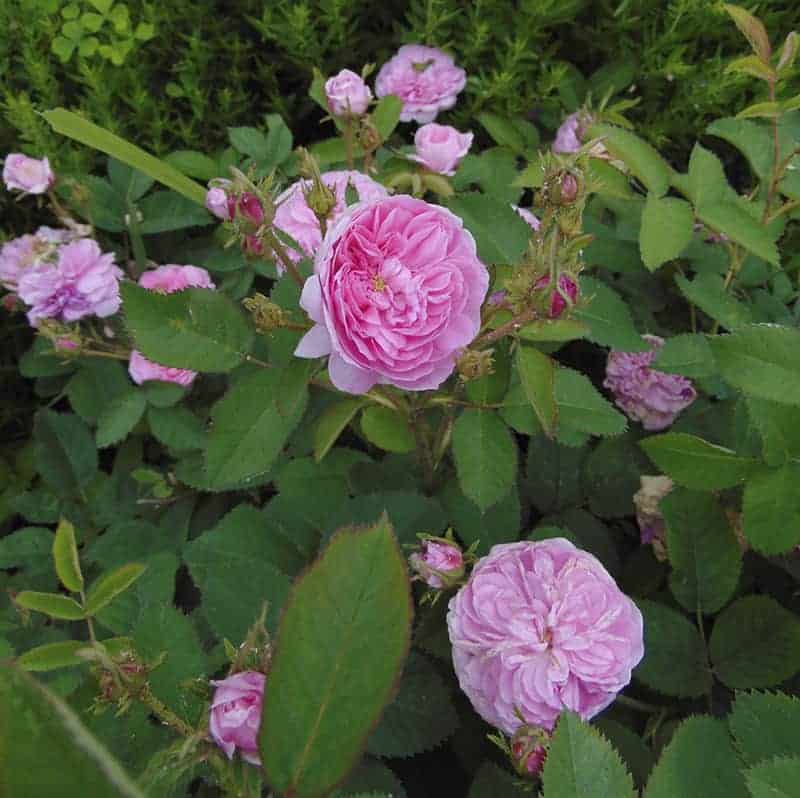
Credit to Nadiatalent
Mature Size: 3to 4 feet tall
Hardiness Zone: USDA hardiness zones 5 to 10
Light: Full sun
Water: Medium moisture
Soil: Well-draining
Flower Color: Dark pink
Special Features: Small free-flowering blooms
31. Rose de Meaux
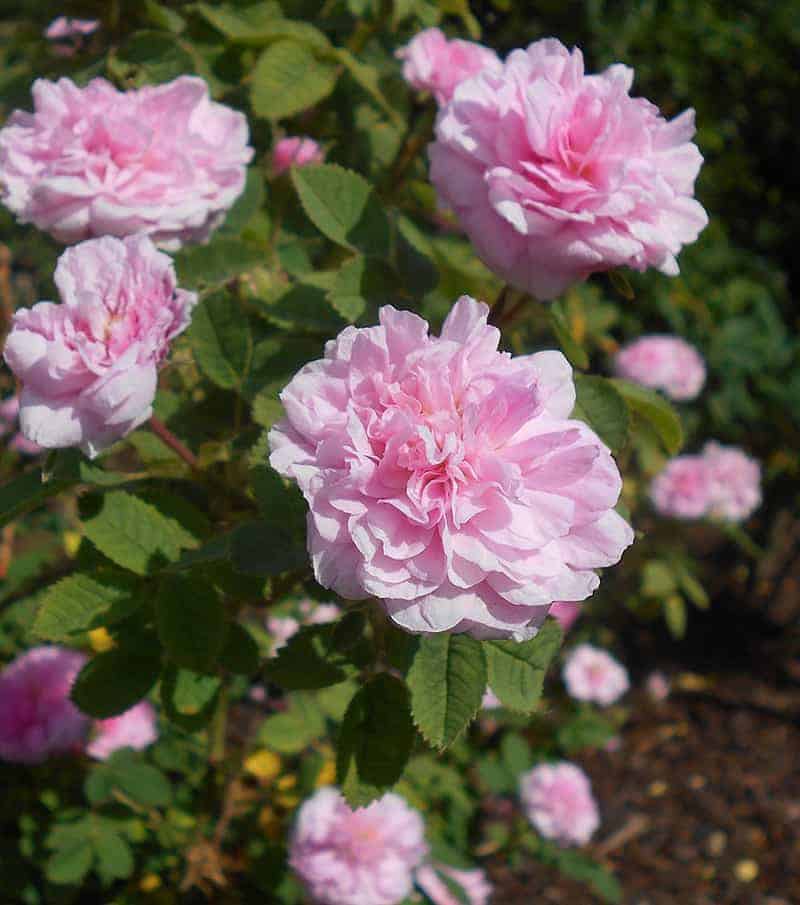
Credit to Salicyna
Mature Size: 2 to 3 feet tall
Hardiness Zone: USDA hardiness zones 5 to 10
Light: Full sun
Water: Medium moisture
Soil: Well-draining
Flower Color: Pink
Special Features: Dwarf shrub with petite blooms
Damask Roses
Damask roses have a romantic appeal. They are heavily scented and are therefore cultivated for use in the perfume industry. Some damask roses bloom just once, while others have the ability to bloom twice in a year.
32. Duc de Cambridge
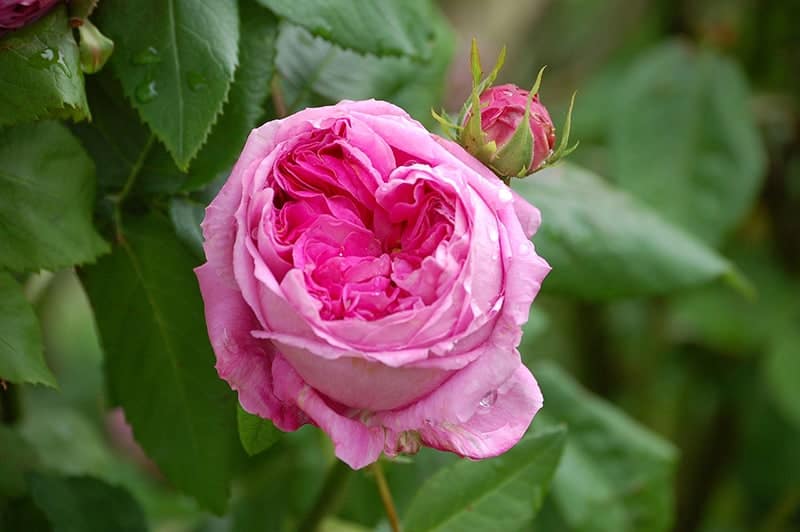
Credit to Sebastian Wallroth
Mature Size: 4 to 8 feet tall
Hardiness Zone: USDA hardiness zones 4 to 9
Light: Full sun
Water: Medium moisture
Soil: Well-draining
Flower Color: Pink
Special Features: Large 5-inch blooms
Gallica Roses
Some species of gallica roses date back to the 12th century. They have strong fragrances and bloom just once each year. They typically come in shades of pink and purple and are tolerant of low light conditions and cooler temperatures.
33. Charles de Mills
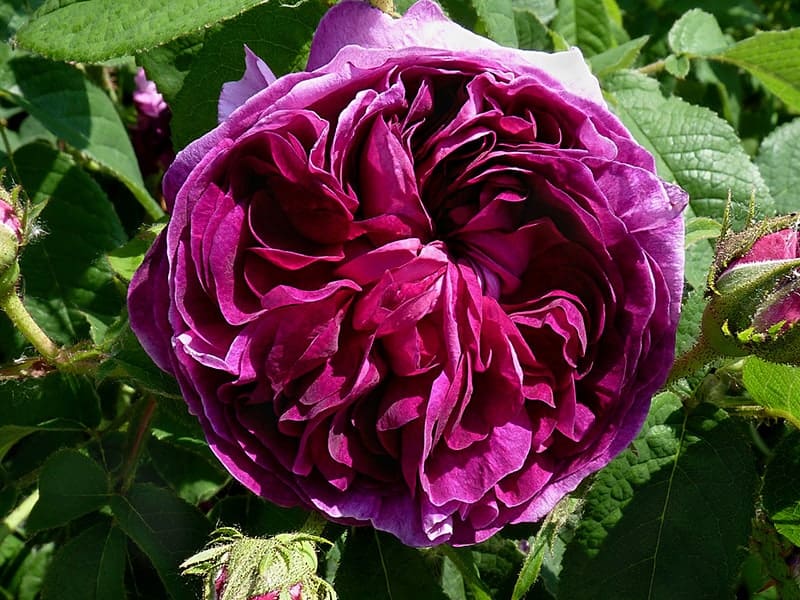
Credit to Jamain
Mature Size: 4 to 5 feet tall
Hardiness Zone: USDA hardiness zones 4 to 10
Light: Full sun
Water: Medium moisture
Soil: Well-draining
Flower Color: Purple red
Special Features: Large blooms with a strong fragrance
34. Tuscany Superb
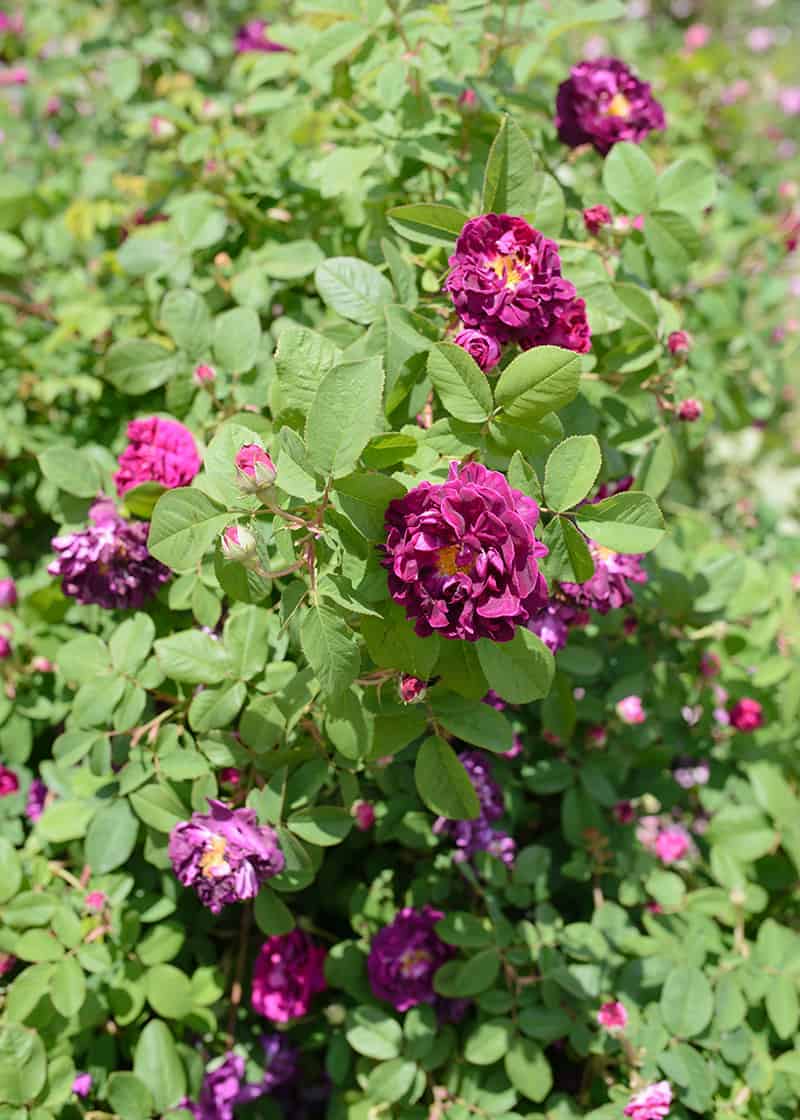
Mature Size: 4 to 5 feet tall
Hardiness Zone: USDA hardiness zones 4 to 10
Light: Full sun to partial shade
Water: Medium moisture
Soil: Well-draining
Flower Color: Purple
Special Features: Golden stamens contrast against vivid purple petals
Hybrid Perpetual Roses
These roses have large blooms and are able to flower repeatedly during a single season. It’s not hard to see why these were the most popular type of roses available before the arrival of the hybrid tea rose came along. These roses generally have strong scents and come in shades of pink, purple, and red.
35. Baroness Rothschild
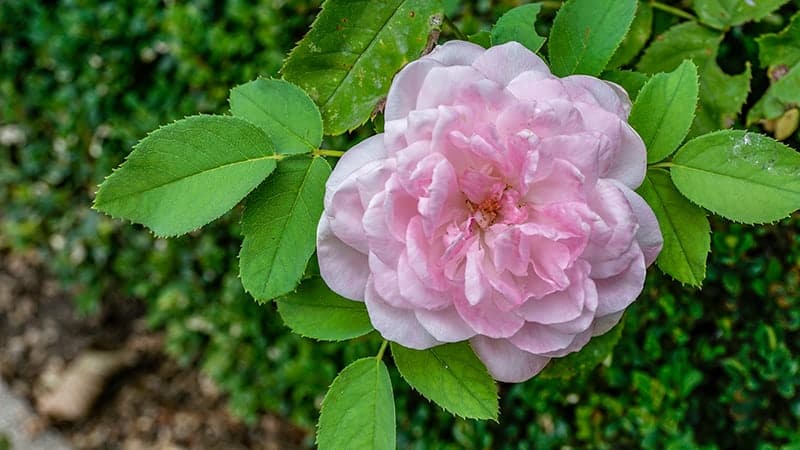
Mature Size: 3 to 4 feet tall
Hardiness Zone: USDA hardiness zones 5 to 10
Light: Full sun
Water: Medium moisture
Soil: Well-draining
Flower Color: Pale pink
Special Features: Shallow cupped large blooms
36. Ferdinand Pichard
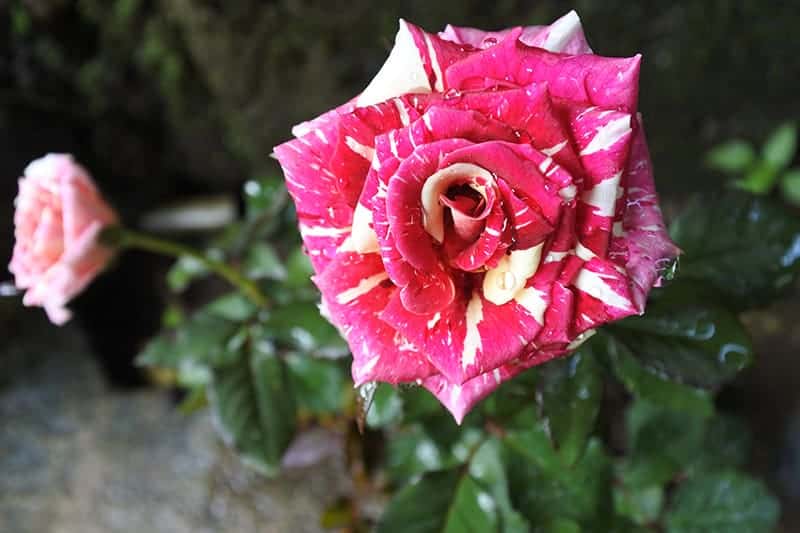
Mature Size: 4 to 5 feet tall
Hardiness Zone: USDA hardiness zones 5 to 9
Light: Full sun
Water: Medium moisture
Soil: Well-draining
Flower Color: Pink and cream
Special Features: Striped petals
Noisette Roses
These roses produce tall flowers that bloom continually. They hail from China and are available in a wide range of colors.
37. Milkmaid
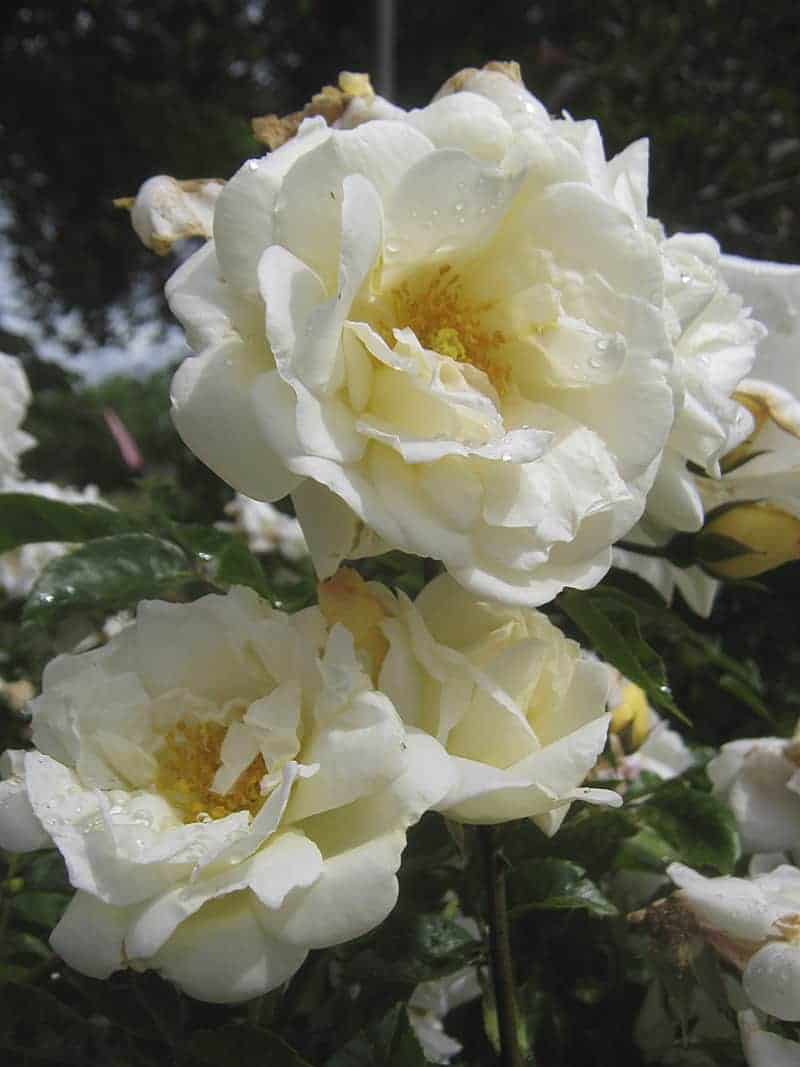
Credit to Eric Timewell
Mature Size: 7 to 9 feet tall
Hardiness Zone: USDA hardiness zones 5 to 10
Light: Full sun
Water: Medium moisture
Soil: Well-draining
Flower Color: White
Special Features: Strong fragrance
Moss Roses
These roses bloom once each year with fragrant blooms available in a wide selection of colors. They are named moss roses because of the growth that covers the top of their stems, which resembles moss.
38. Crested Moss
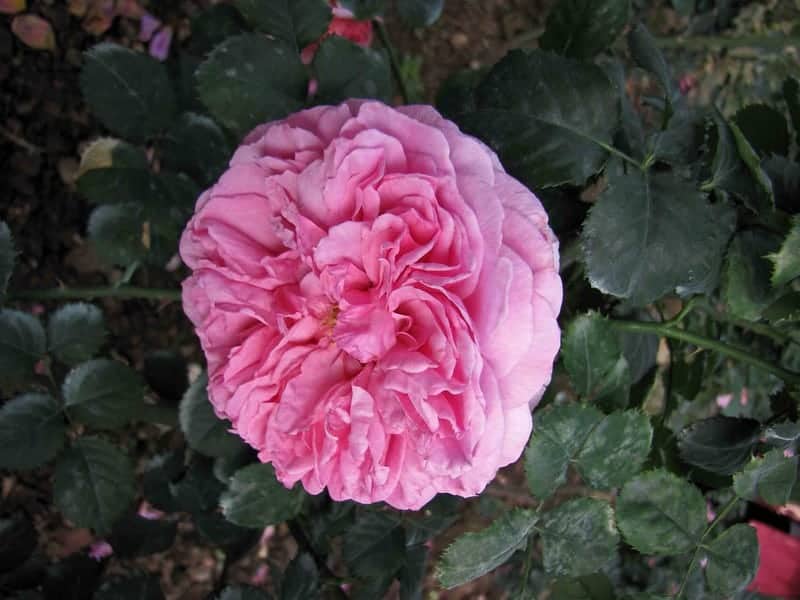
Credit to nhq9801
Mature Size: 4 to 6 feet tall
Hardiness Zone: USDA hardiness zones 4 to 9
Light: Full sun
Water: Medium moisture
Soil: Well-draining
Flower Color: Mid pink
Special Features: Highly fragranced
39. Portulaca Grandiflora
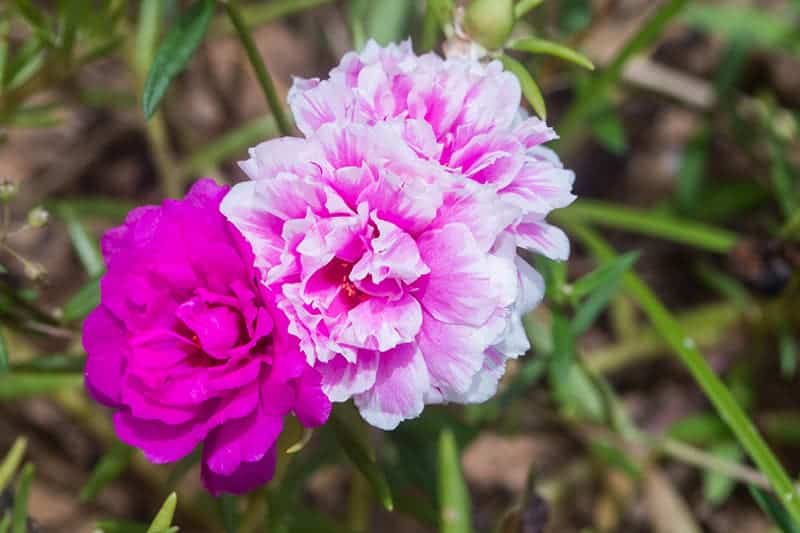
Mature Size: 3 to 6 inches tall
Hardiness Zone: USDA hardiness zones 2 to 12
Light: Full sun
Water: Medium moisture
Soil: Well-draining
Flower Color: Pink, red, white, yellow, or orange
Special Features: Succulent-like foliage
Portland Roses
These roses have very short stems, so the flowers appear to be growing directly out of the foliage of the plant. Very few varieties of Portland roses still exist, predominantly flowering in summer.
40. Comte de Chambord
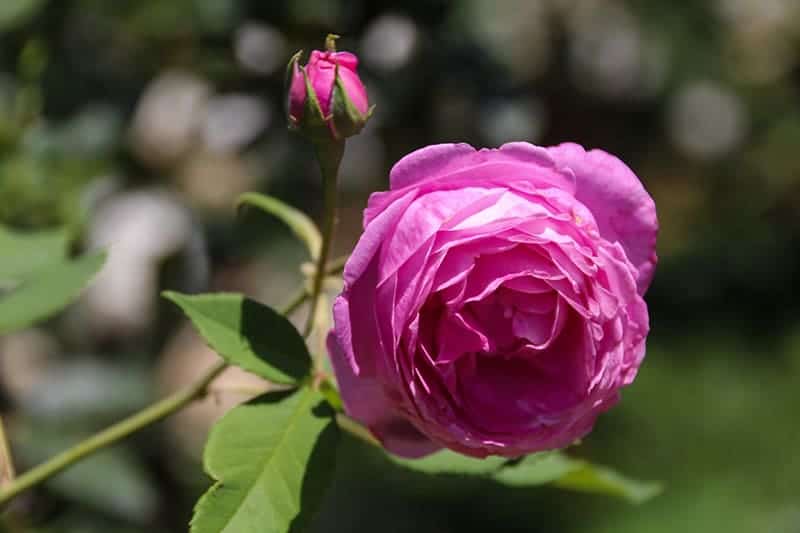
Mature Size: 3 to 4 feet tall
Hardiness Zone: USDA hardiness zones 5 to 10
Light: Full sun
Water: Medium moisture
Soil: Well-draining
Flower Color: Lilac pink
Special Features: Strong fragrance
41. Rose du Roi
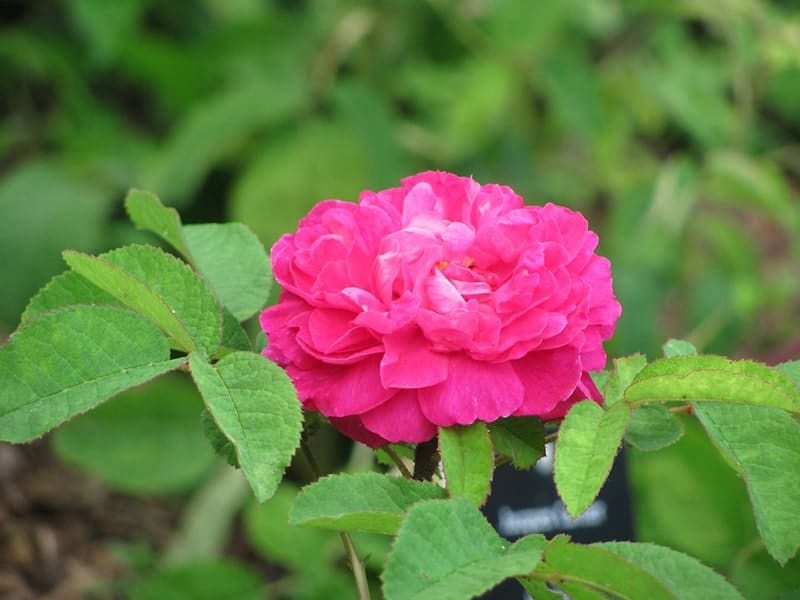
Credit to Rose du Roi
Mature Size: 2 to 3 feet tall
Hardiness Zone: USDA hardiness zones 5 to 10
Light: Full sun
Water: Medium moisture
Soil: Well-draining
Flower Color: Red-purple
Special Features: Large semi-double blooms
Tea Roses
These roses originate from China and are named because their scent is reminiscent of Chinese black tea. These flowers bloom repeatedly, with delicate-looking roses that peel back on the outer petals. They are resistant to disease and produce large and aromatic blooms.
42. Duchesse de Brabant
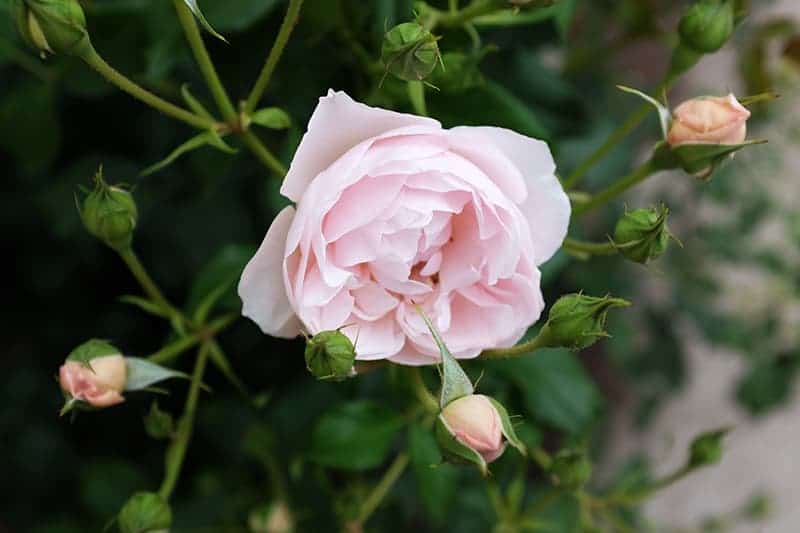
Mature Size: 2 to 3 feet tall
Hardiness Zone: USDA hardiness zones 4 to 10
Light: Full sun
Water: Medium moisture
Soil: Well-draining
Flower Color: Soft pink
Special Features: Fully double cupped blooms
43. Safrano
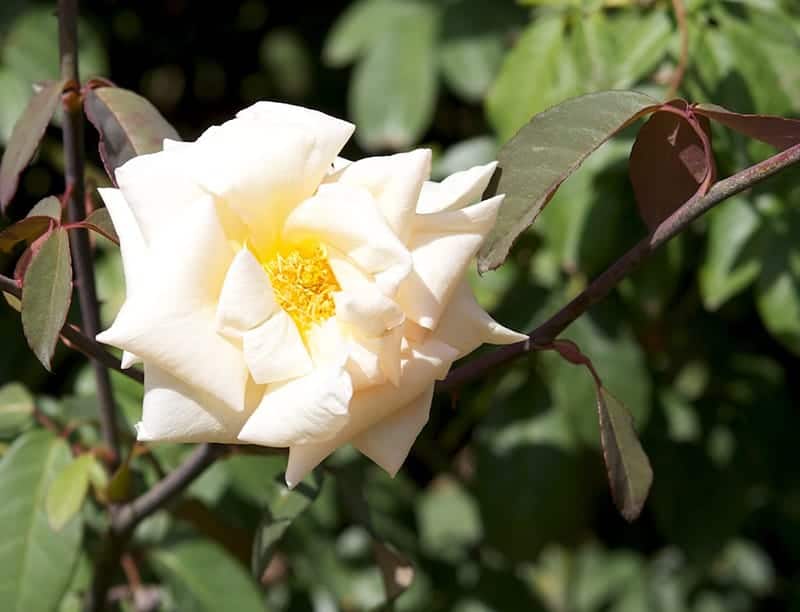
Credit to mmmavocado
Mature Size: 2 to 3 feet tall
Hardiness Zone: USDA hardiness zones 6 to 10
Light: Full sun
Water: Medium moisture
Soil: Well-draining
Flower Color: Apricot
Special Features: Unfragranced
